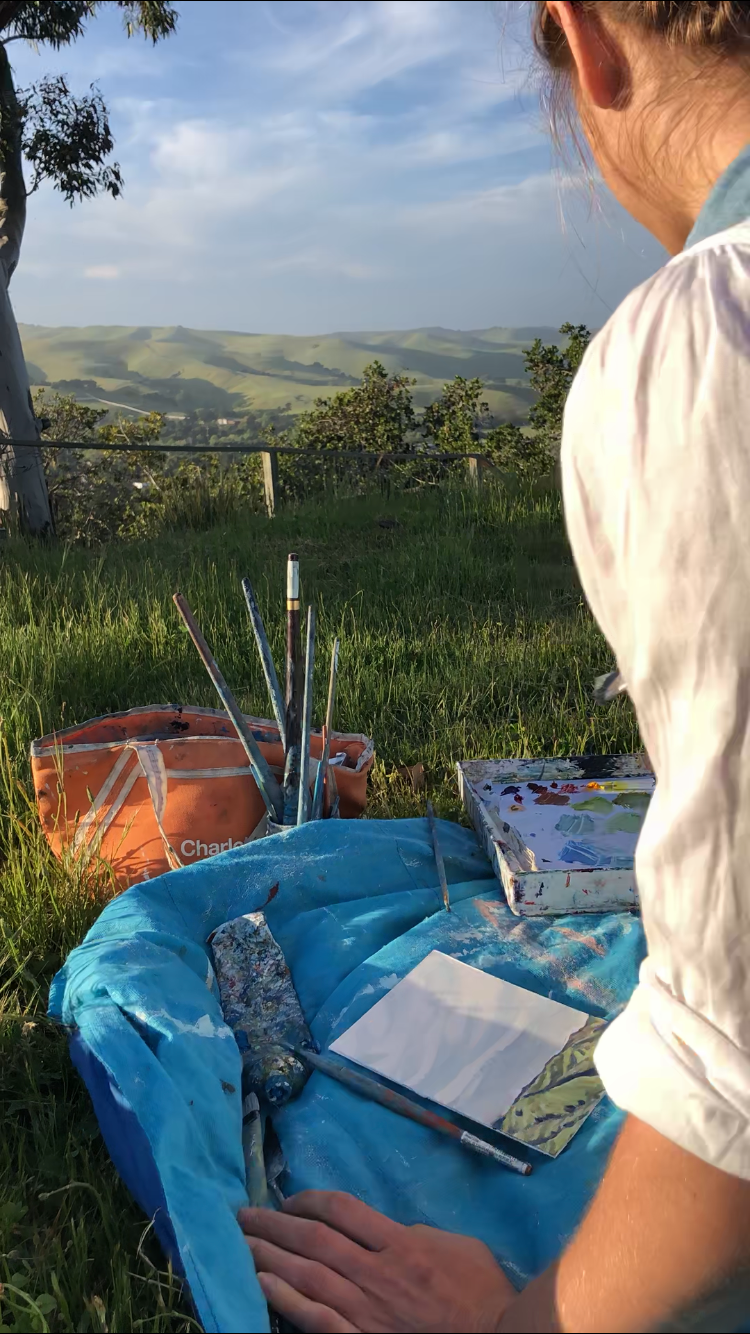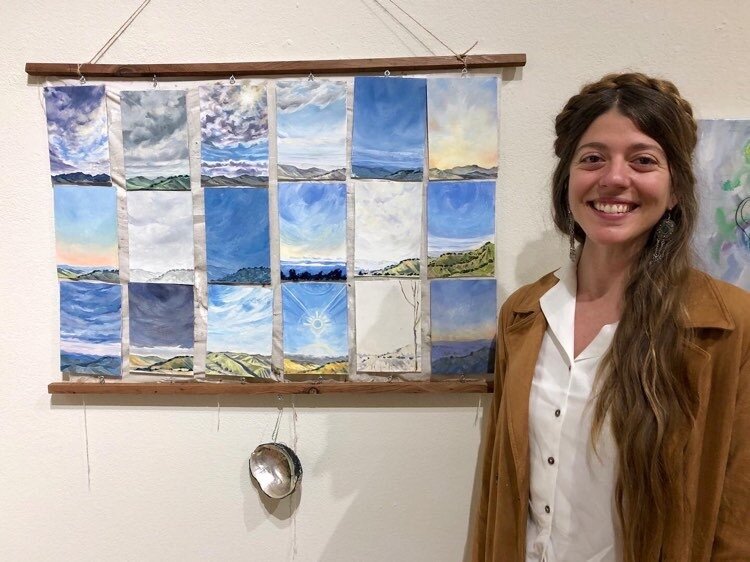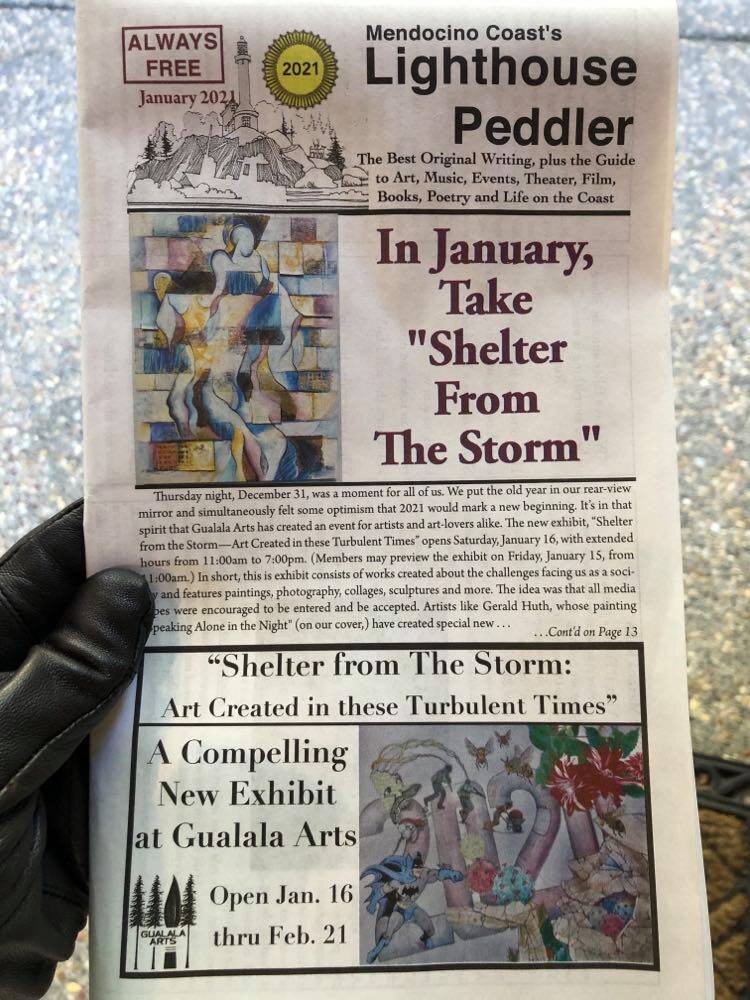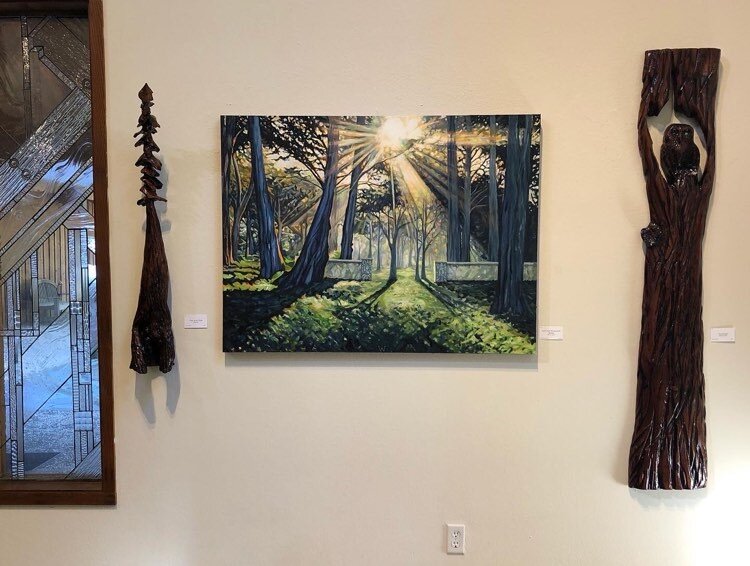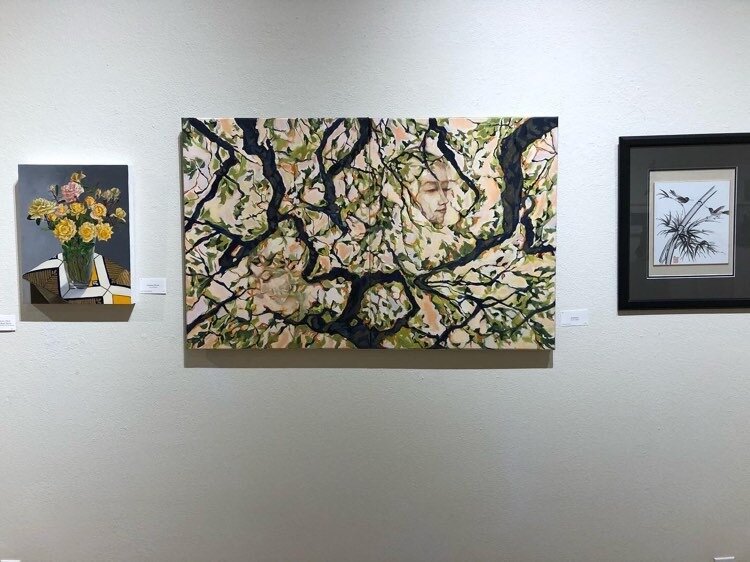Illustrations made through Adobe Photoshop for packaging labels for soaps I made at Hermitage Farm:
Soap Making
In 2022 I started making cold-processed soaps and illustrating their labels for Hermitage Farm— I was not expecting to fall so deeply in love with soap making but here we are, I’m head over heels! I’m excited to share more of this work soon but first I want to share one that was very personal for me to make:
I love this process because it is part intuition, part chemistry, as ritualistic and visceral as painting, and place-specific. These soaps begin with a walk in the woods just like my paintings do. I also love creating with healing intentions; caring and making things for people is a love language I learned from my family. My Grandma Sue was one of the sweetest ladies *ever* to have lived, and I never felt better cared for than when I was in her home. She had forsythia wall paper in the dining room that always smelled like fresh baked bread, and a long row of forsythia bushes thrived behind her house. Whenever I see these bright yellow flowers I feel her warm energy, and so was born the inspo for this Forsythia Soap!
Besides these sappy memories, I also wanted to make the most of the season’s offerings: Forsythia is rich in Vitamin C with antimicrobial properties, and gently soothing for irritated or sensitive skin. The foraged flowers are infused in the base oils, used as a color pigment and finished as a garnish. Cedarwood, Rosemary, and Lemongrass essential oils add uplifting, bright aromas while also helping repel Kentucky summer bugs. Looks pretty on a plate but I assure you it just goes on your skin 😌
Thanks for reading and can’t wait to share more creations with you soon! And if one of these bars do come into your hands, I hope you feel as loved and cared for whenever you use it as making them felt for me 💛
#coldprocesssoap #artprocess





Ode to Esselen homelands/Big Sur
My latest passion project has been creating a painting for Seventh Generation Art Fair this summer, hosted by The Elisabeth Jones Art Center in Portland Oregon. This project creates a community of coastal watchers by collectively forming a one mile panomural depicting the California, Oregon, and Washington coastline. This is dedicated to reinvigorating environmental consciousness and addressing the urgent need of ocean health. As artists we’re asked to choose a nonprofit to donate a third of the proceeds to and to paint a place in our hearts. I’m hopelessly in love with this one.
Esselen Homelands/Big Sur Bliss, 2x4’ oil on wood panel, 2021






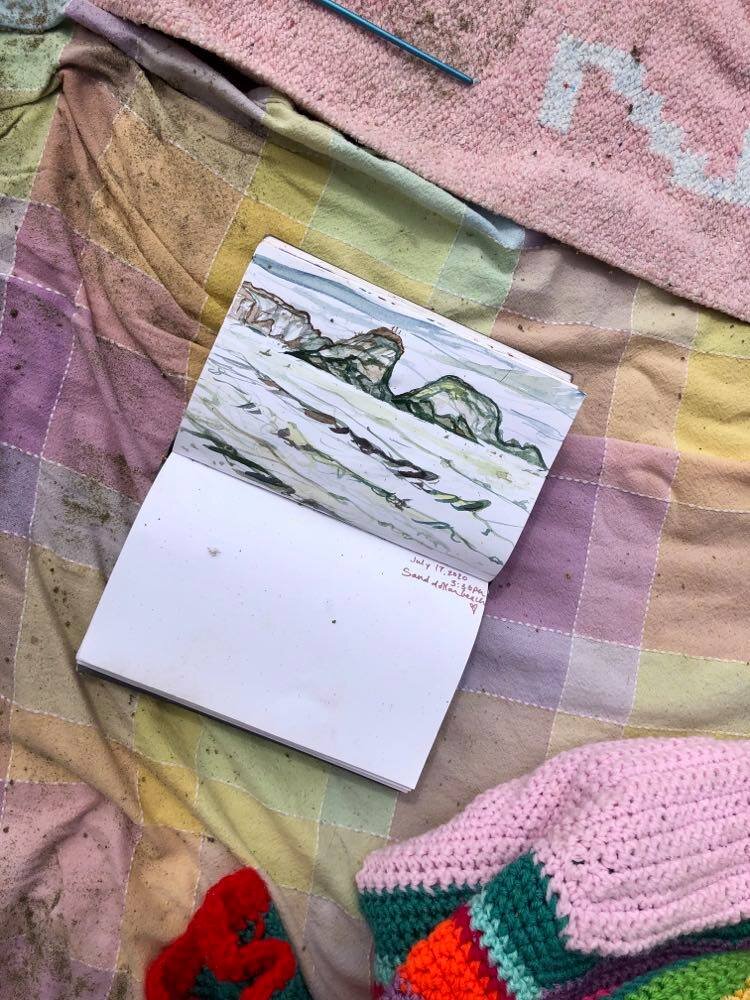



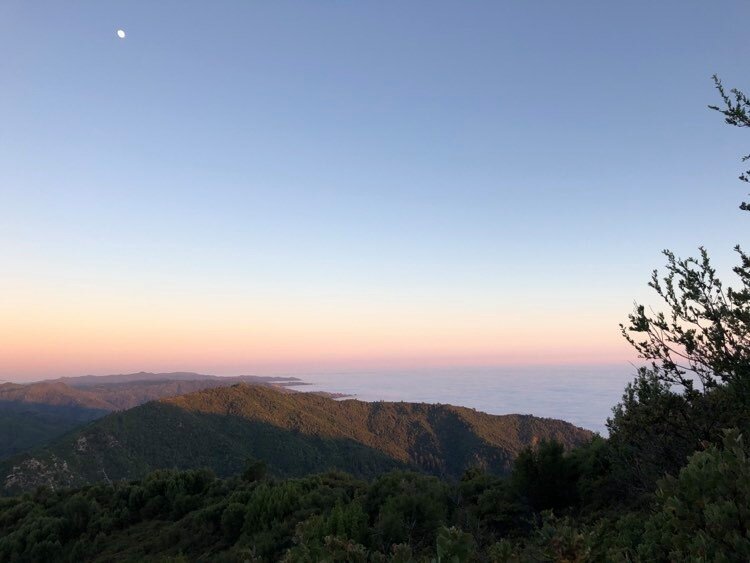
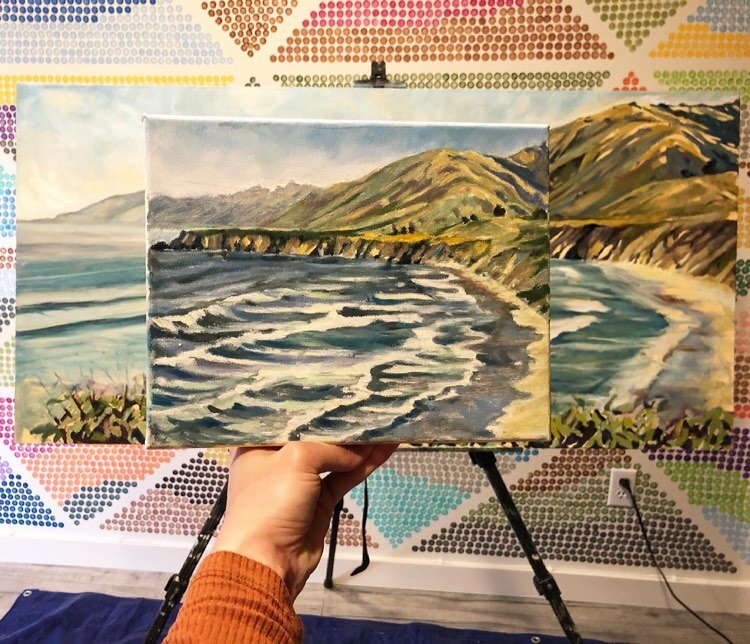

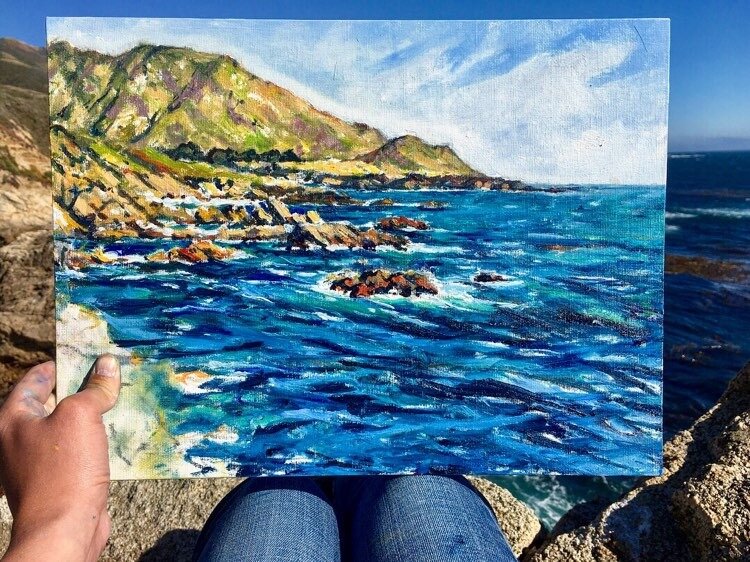

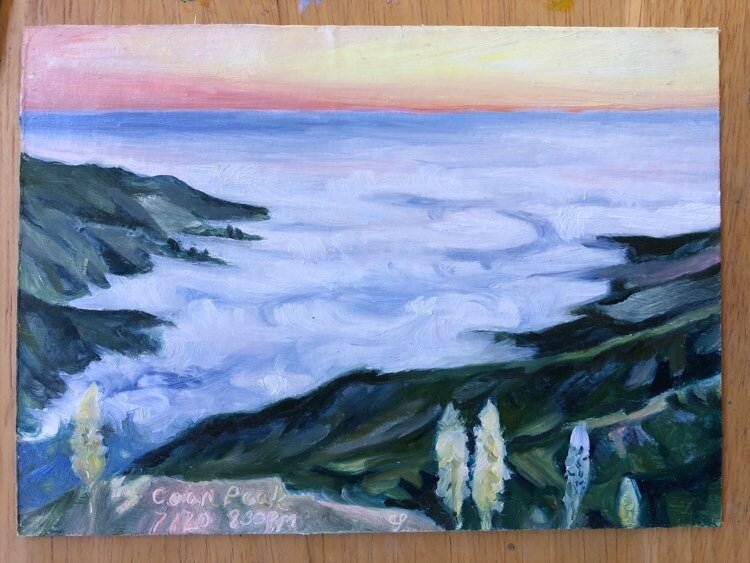
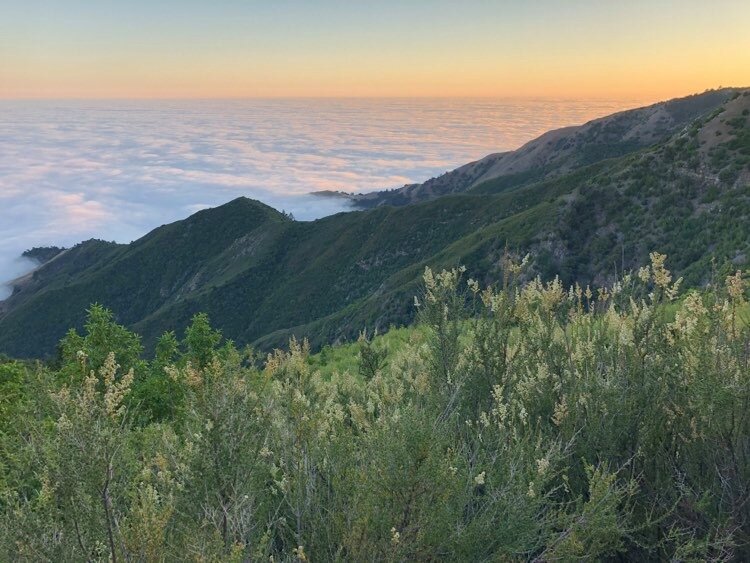
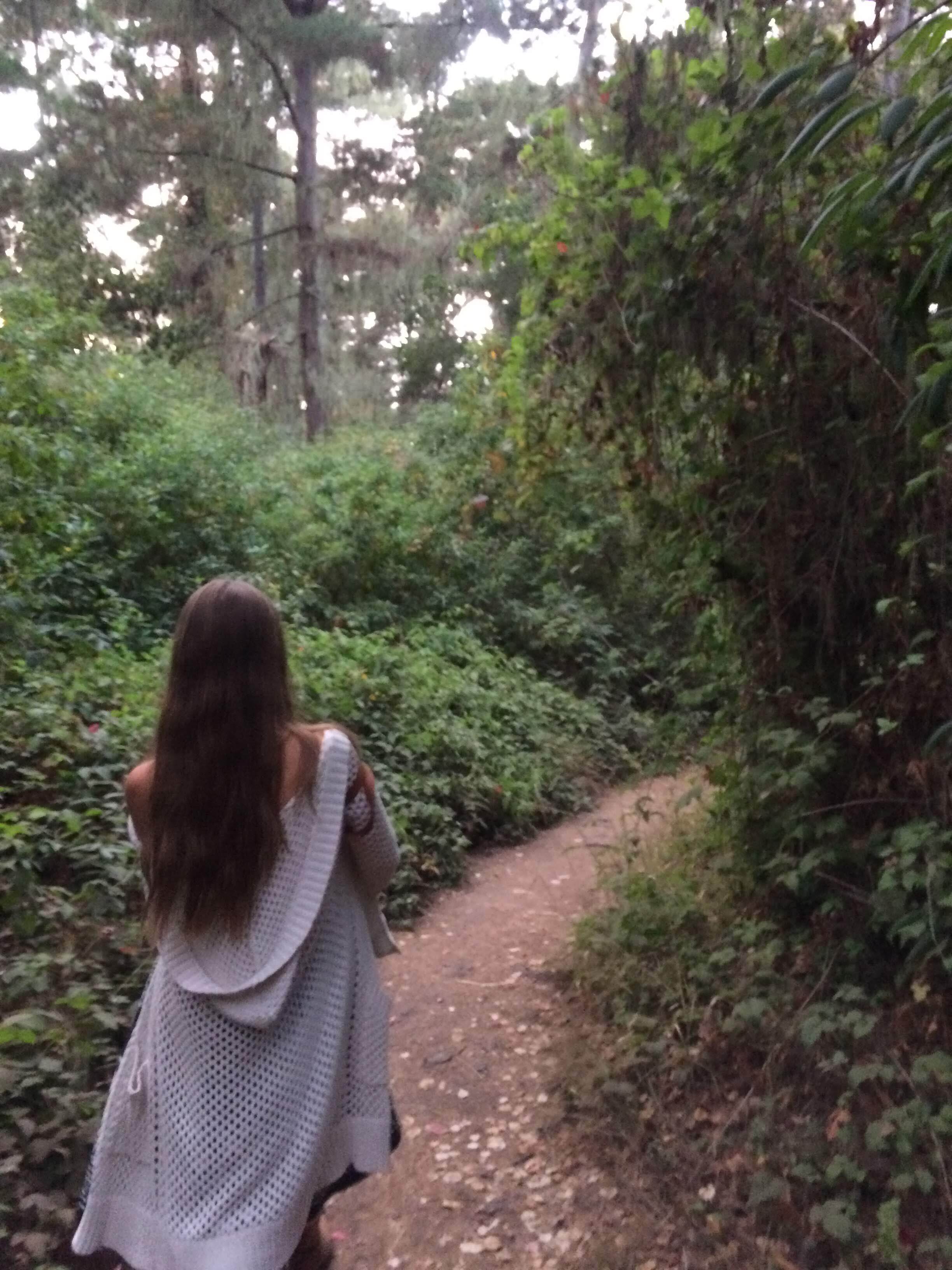
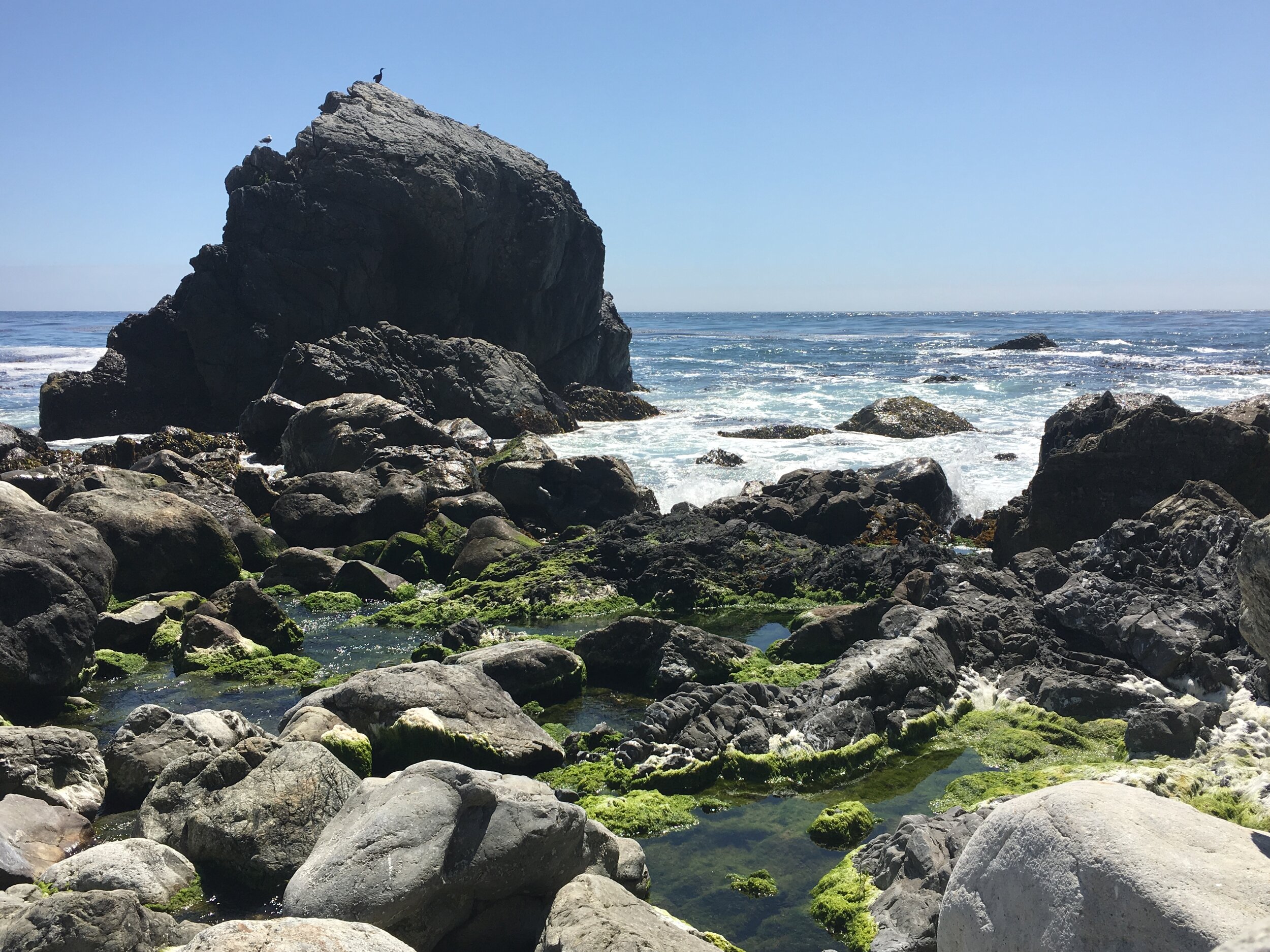
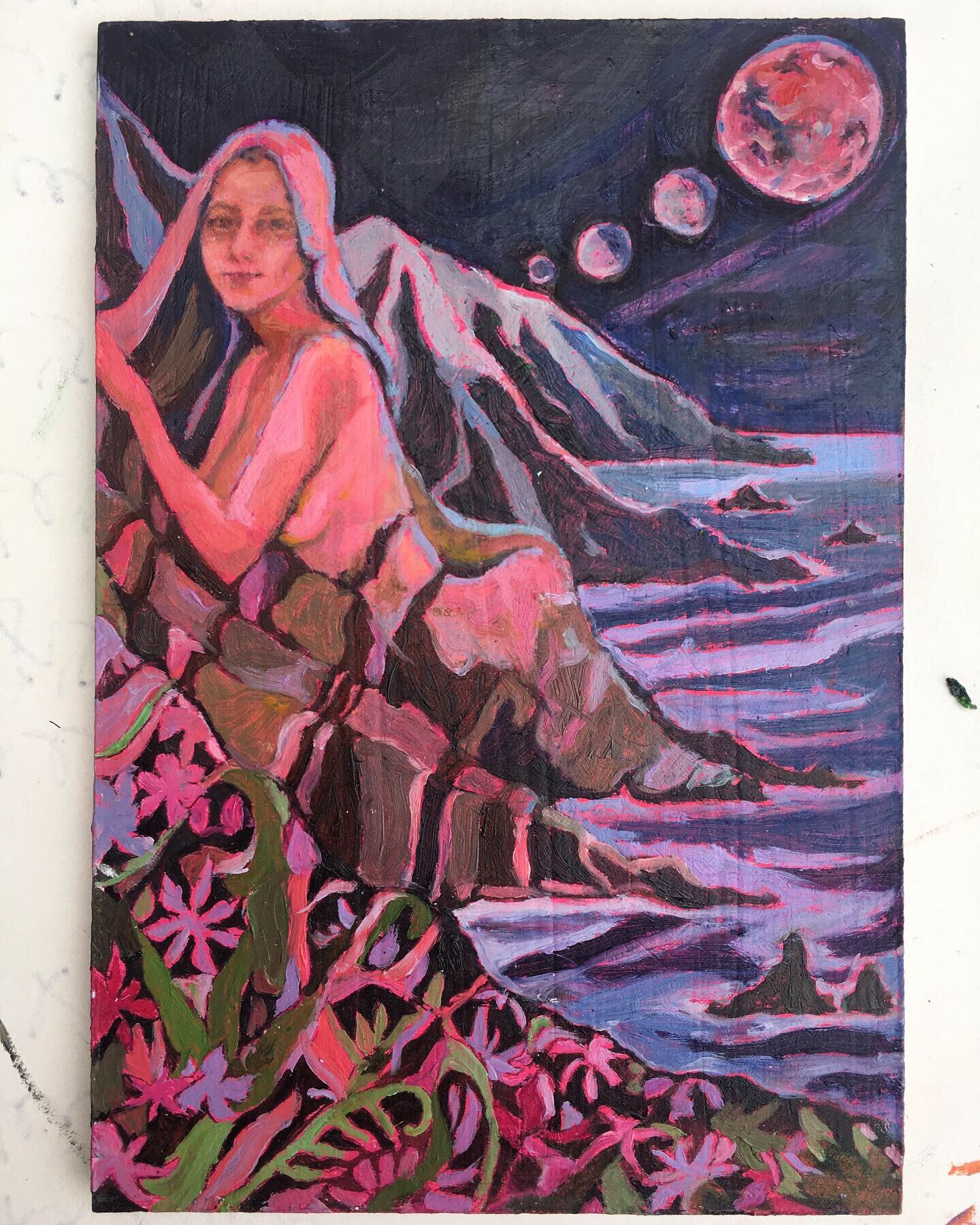

“Whoever settles here hopes he will be the last invader.”
When I first came out West from Kentucky I only intended on staying two months, and that was three years ago. The family that hosted me happened to be among some of the first generation of homesteaders here in the late fifties, and all around wonderful people that opened up their colorful world to me. And so I dove on in! This place makes me feel like I could fly out of my body and cry at the same time, it’s so beautiful. I cherish memories of swimming in these waters, eating strawberries in the sun and savoring my bliss. After being here I always feel more grounded and expansive.
‘Big Basin Campsite’ hanging on a grandfather redwood tree at Henry Miller Library. It’s for sale, and if you purchase 1/3 goes to the library.
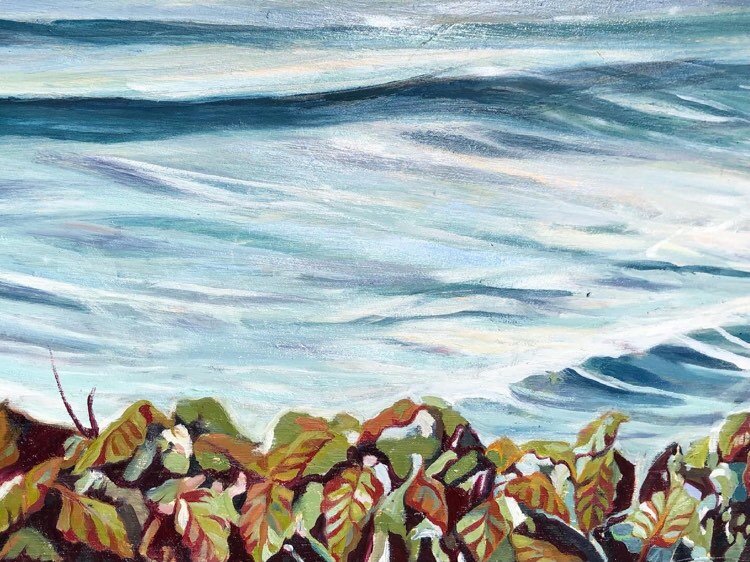
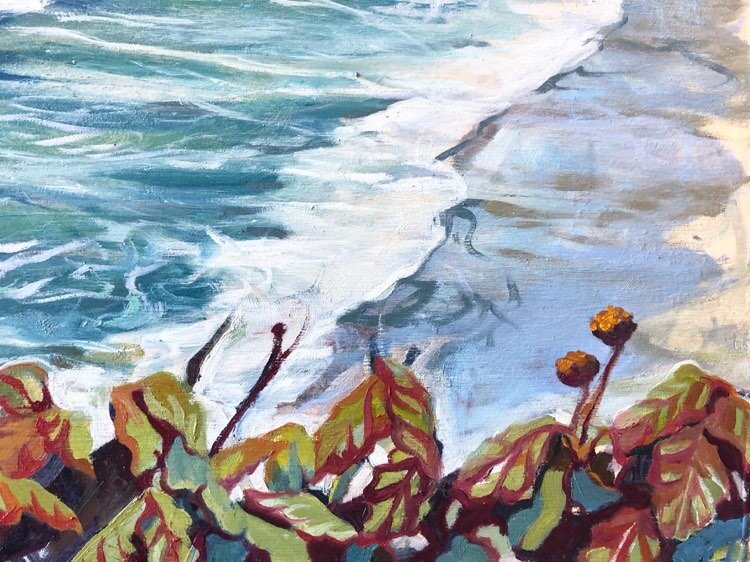
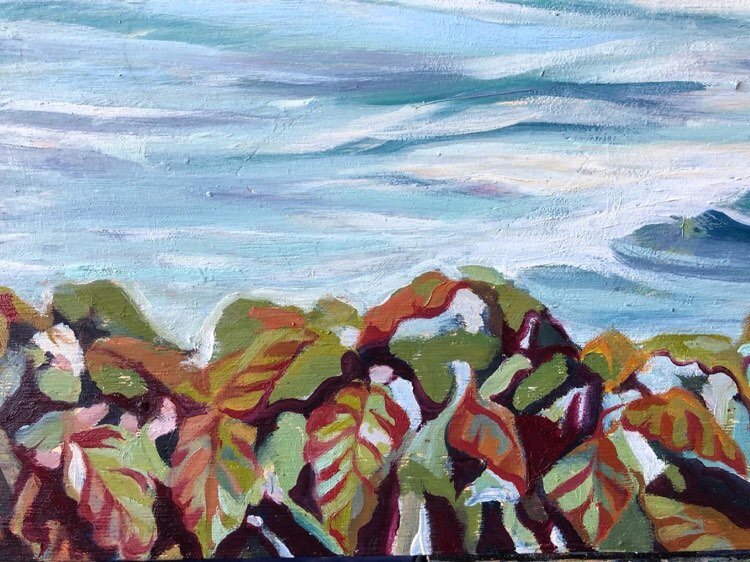
I was mindful to include poison oak at the base of this painting because it abundantly lines the coasts here. It’s also a very useful plant with an infamous reputation. Since most of us react extremely sensitively to it, we avoid areas where it lives. Therefore the landscape is allowed rest from too much human activity.
“ We can thank poison oak for helping to keep steep slopes in place and for fostering oak woodlands here on the Central Coast.”
While making this I re-listened to an Esselen Tribal Blessing by Chief Tom Little Bear Nason from the Bohypsian podcast. The Esselen Tribe of Monterey Co won back 1,199 acres of their sacred ancestral homeland after 250 years this past July. If you ever find yourself going to this magical place I urge you to listen to this first, to understand the land you’re entering into and your responsibility to it once you’re there. Please don’t litter, leave no trace and/or improve it, and maybe skip the part of recklessly pulling over to get the millionth selfie taken by Bixby Bridge.
The mural will be up July 25 in Lincoln City, Oregon, and then individual panels will be for sale in their Portland gallery this Fall. Once sold, the proceeds will be split into thirds:
A third to the Elisabeth Jones Art Center, a gallery committed to environmental and social justice that creates amazing projects like this, a third to the Esselen Tribe of Monterey County, because this is their ancestral homeland and if anyone can restore the landscape back to health it’s them, and a third to me, to help me keep learning from the land by painting places I love with enough gas in my car to get there.
Thanks for reading! Always travel in braids xo
Quarantined Devotions
March 1, 2020: Having freshly signed on as artist-in-resident for Hotel 1110, the boutique hotel in Monterey where I’d been bartending the last six months, I moved into a dream apartment in the Salinas Valley, also known as Steinbeck’s Pastures of Heaven. At this point, talk of the pandemic was still out at sea and we hoped it might not reach our shores. By the middle of the month, the hotel shut down and we were all sheltered-in-place. I found myself in this beautiful space with no work obligations other than to make art. I started painting the view out my window because it was easily my favorite thing about living there and I couldn’t believe my luck that this was the place I was quarantined. The first thing I’d do every morning was look out this window to see how the sky appeared that day. Some mornings those hills were blanketed in a fog so thick you couldn’t see past the first ridges. Some mornings the sun rose clear and bright over the eastern ridges and light played across the hills like piano keys. Love for these daily miracles is what propelled me to grab my brushes first thing, sometimes even before my first sip of coffee.
“Nobody looks up at a real sky for more than a minute without making a wish related to some current fear or hope.”
Painting is my ritual to stay humble and in awe of my surroundings, and through the process little homages of gratitude are created. This valley/window became my motif to communicate while I lived here; I put my thoughts, feelings, observations, hopes and fears into my brushwork. Some mornings I awoke with restless thoughts and so I’d go to the window and paint, grounding myself through this meditation. Some nights I began to make dinner and then was distracted mid-kitchen prep by a particularly intriguing sky color--and so I’d stop what I was doing to run over, mix some colors and tackle down a quick study.
My copy of The Letters of Vincent Van Gogh, from the Marchutz School of Art.
I started painting these first on masonite boards that were cut and primed, and after I ran out those, I used bristol board that I gessoed and cut down to 5”x7” panels. This idea came from my last summer in college when I studied at The Marchutz School of Art in Aix-en-Provence, France. We prepared our canvases by gessoing cardboard that we cut to smaller sizes. This was to remain true to our intentions of quickly and authentically capturing an impression of a place and time, rather than being too attached to achieving a perfect rendering. Somehow subconsciously, when one paints on finer materials, it instills a pressure to not waste it—to make something worthy of its quality. This in turn can result in the desire for perfection to choke the life and breathe of creation.

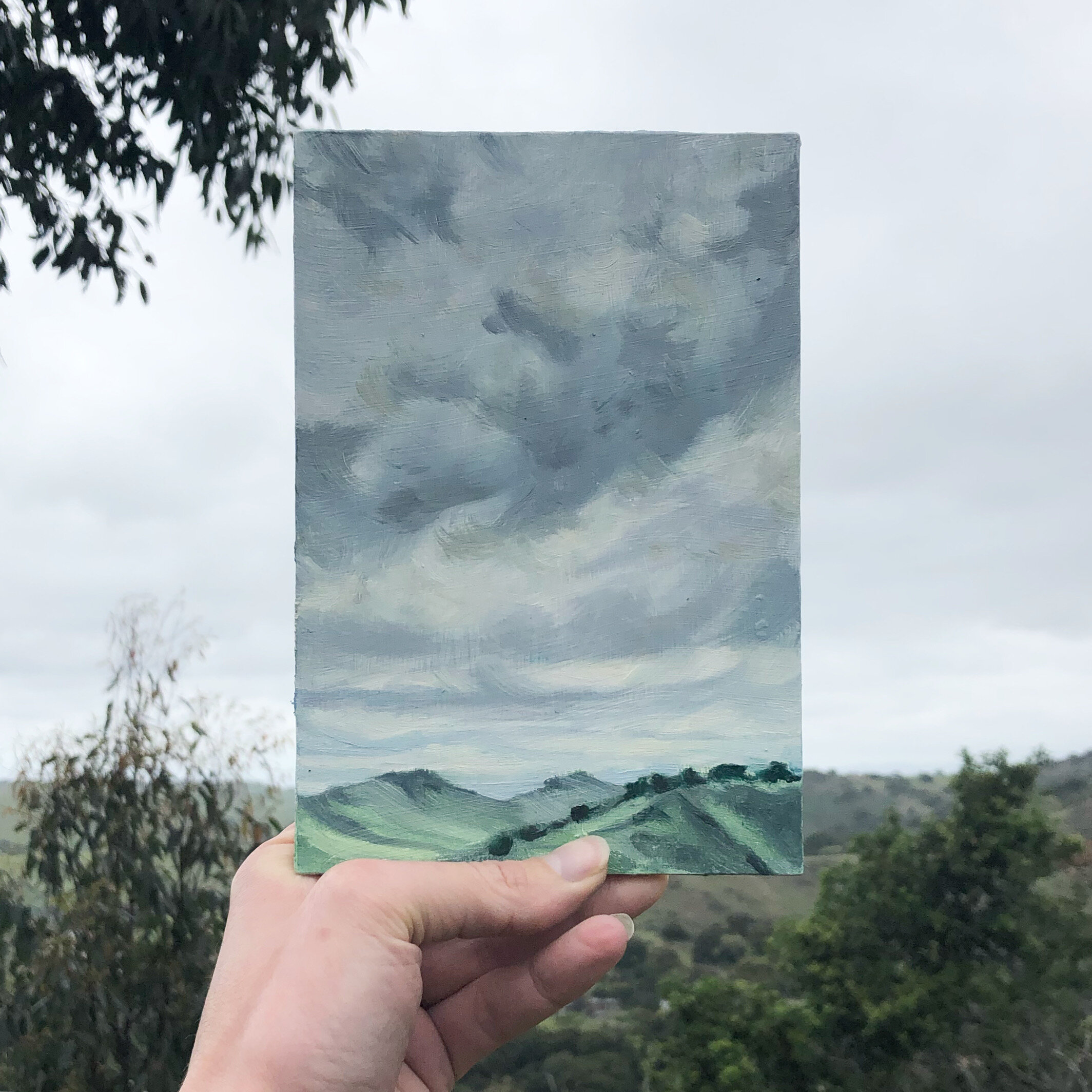

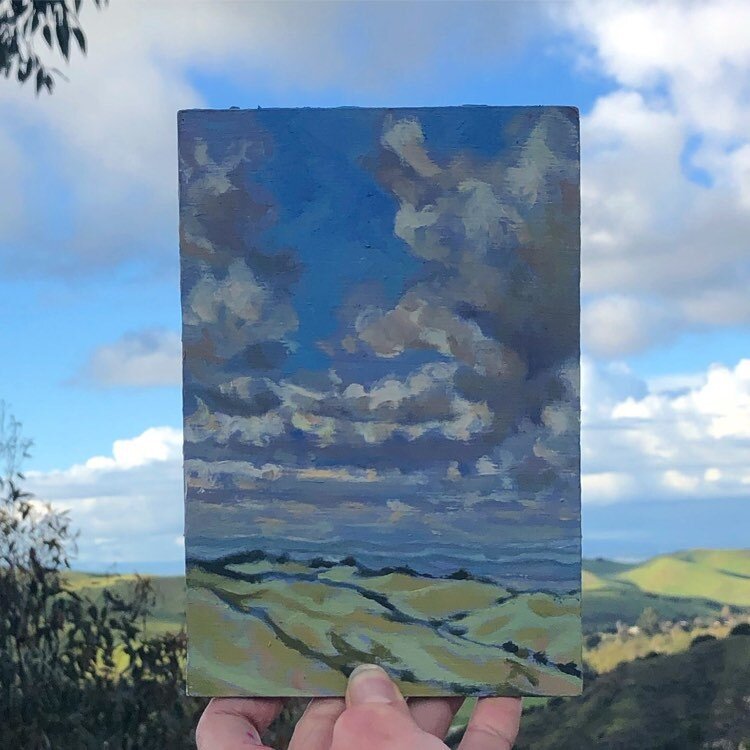

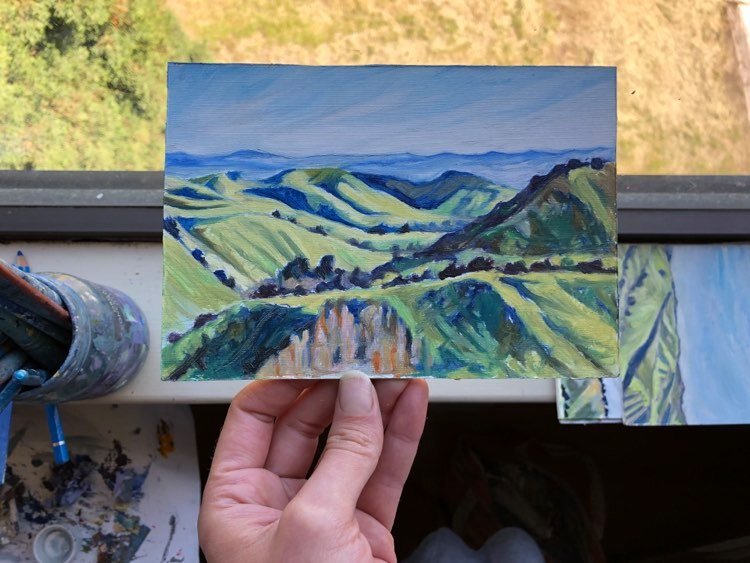
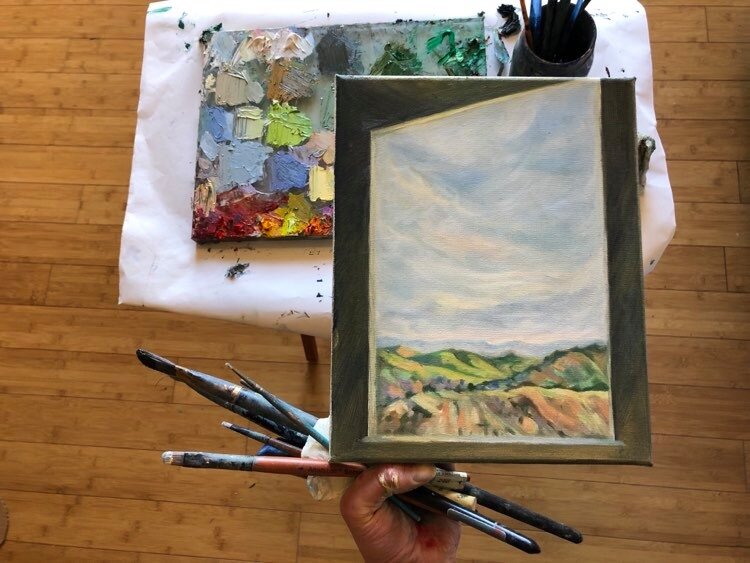

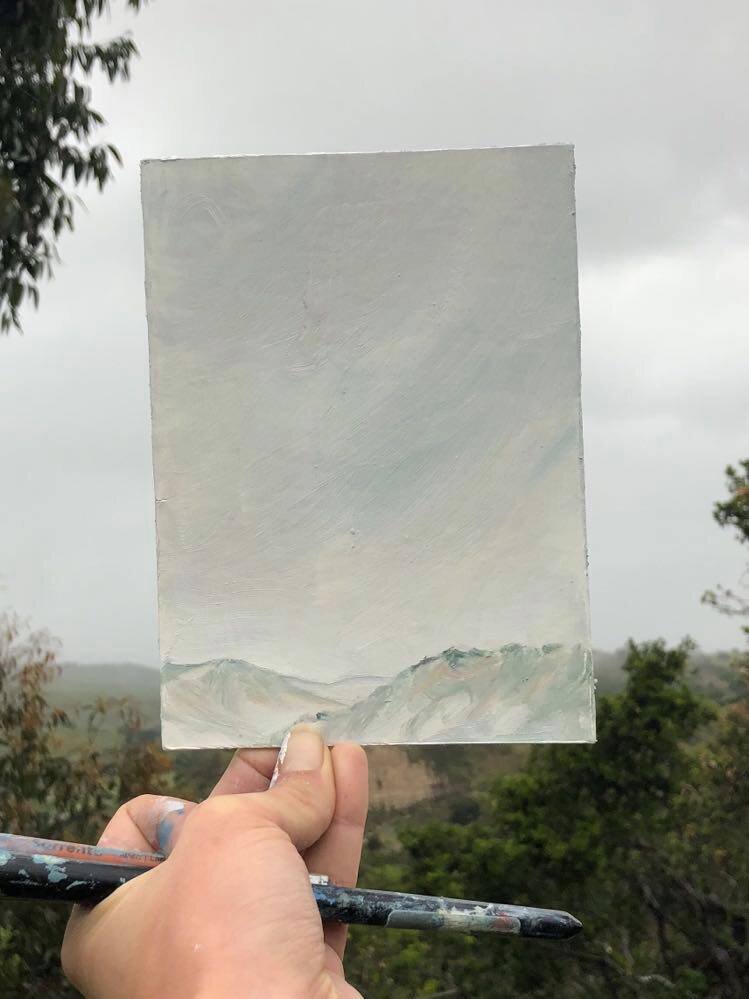
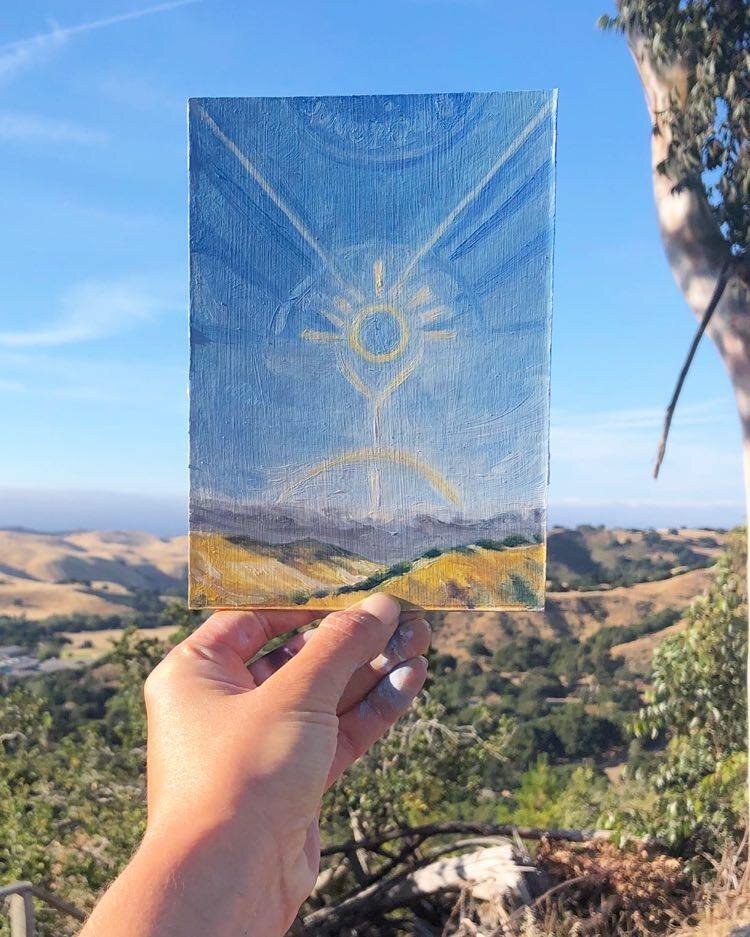


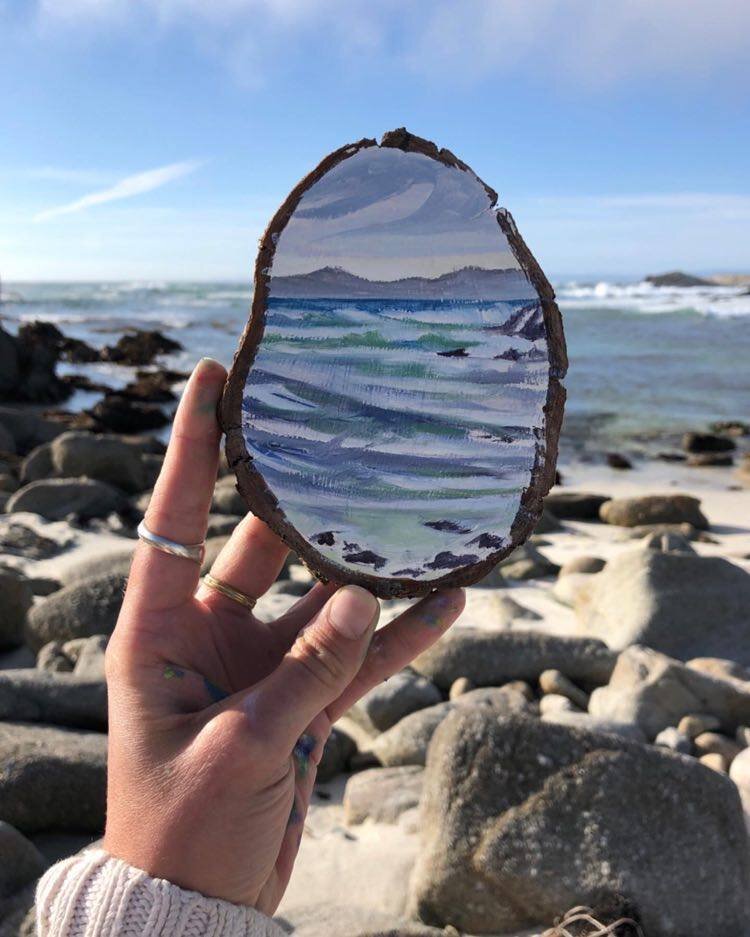

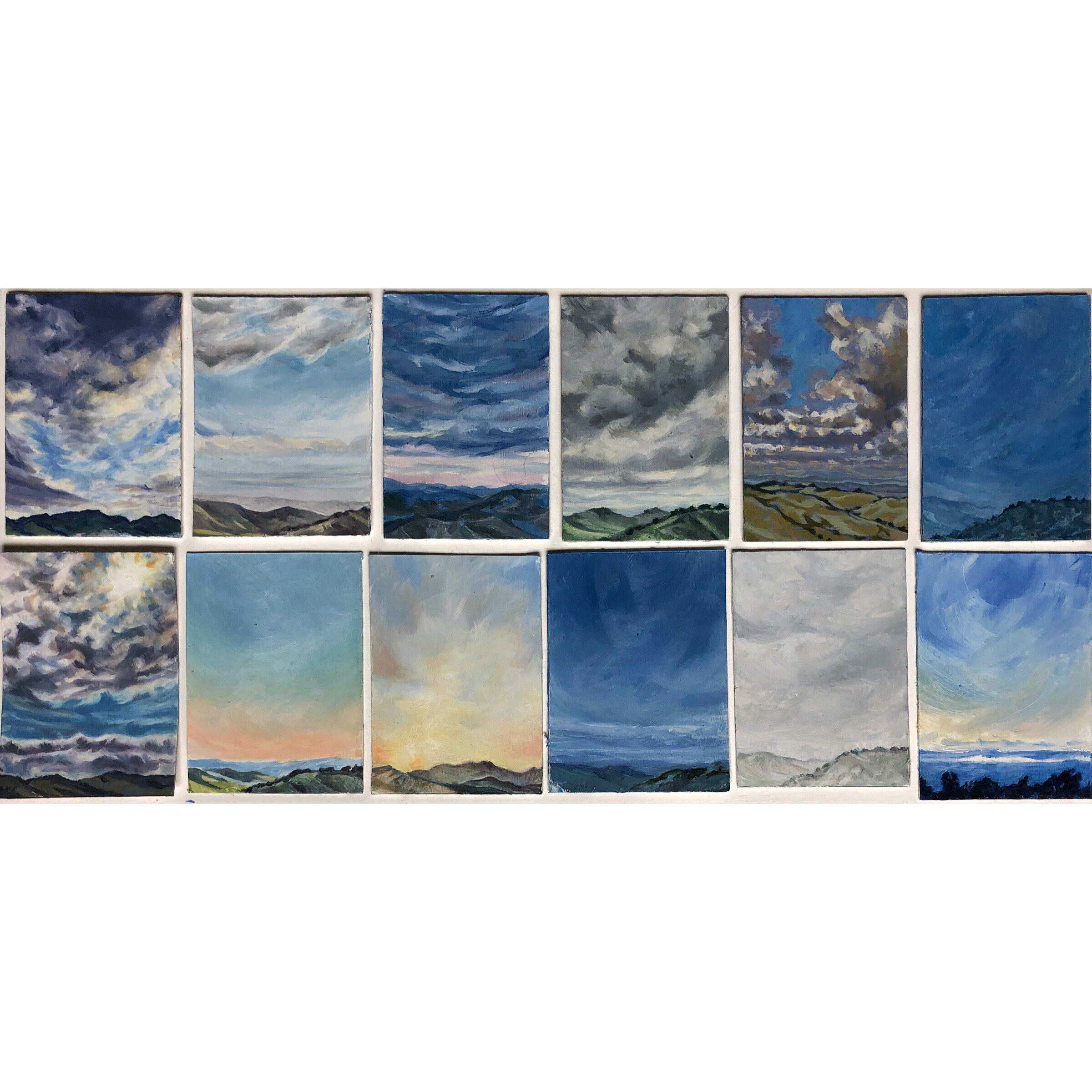
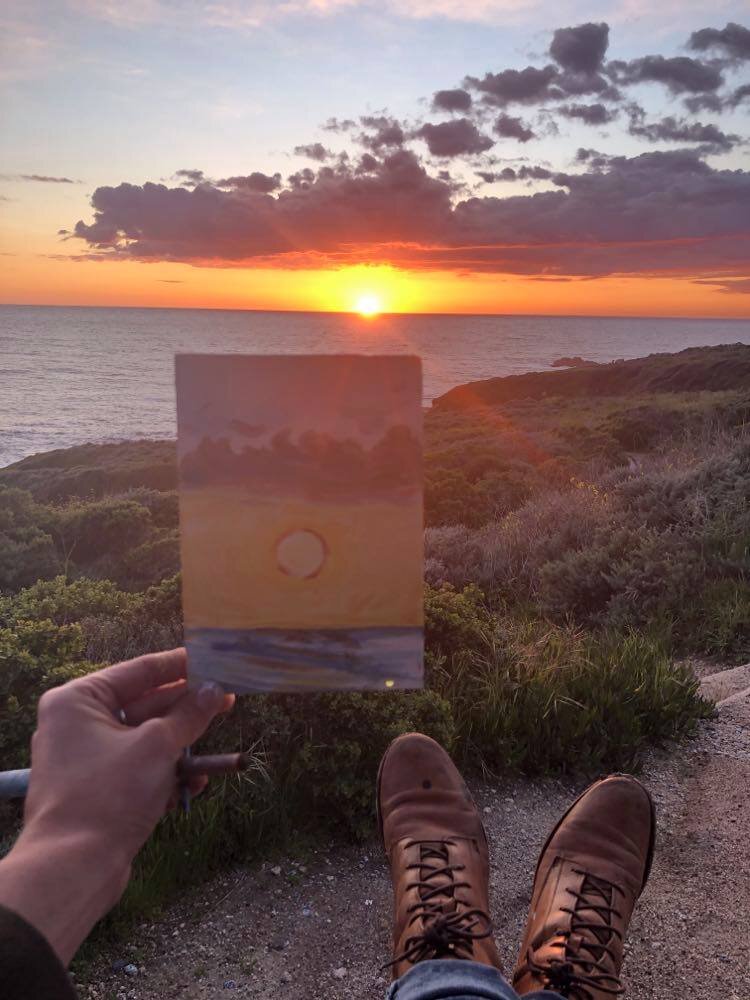
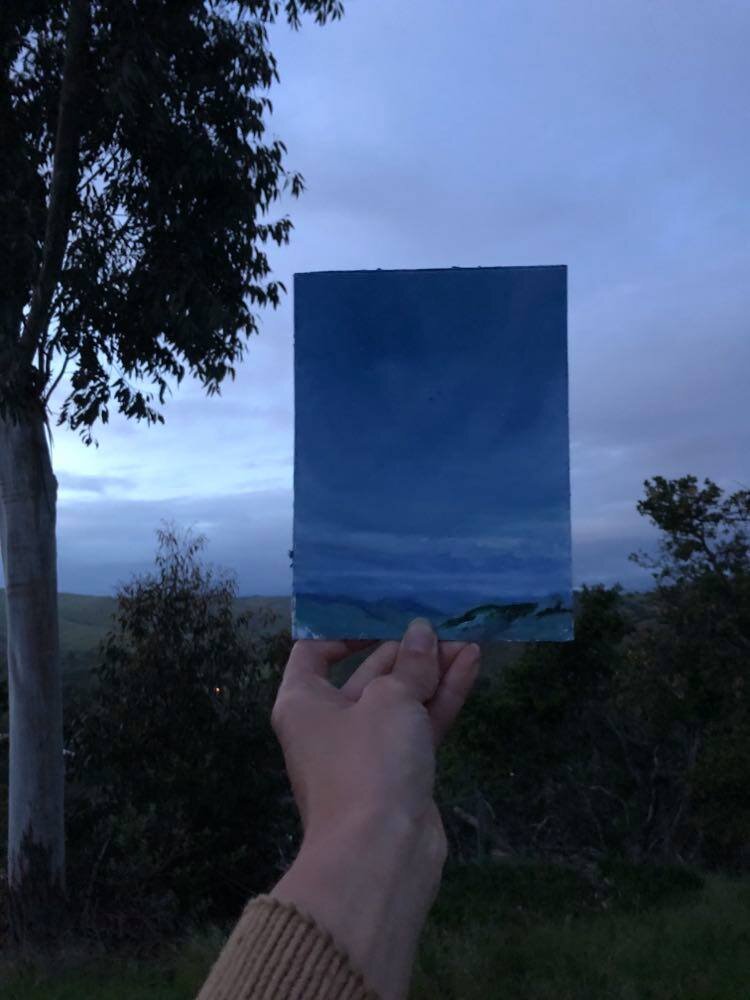
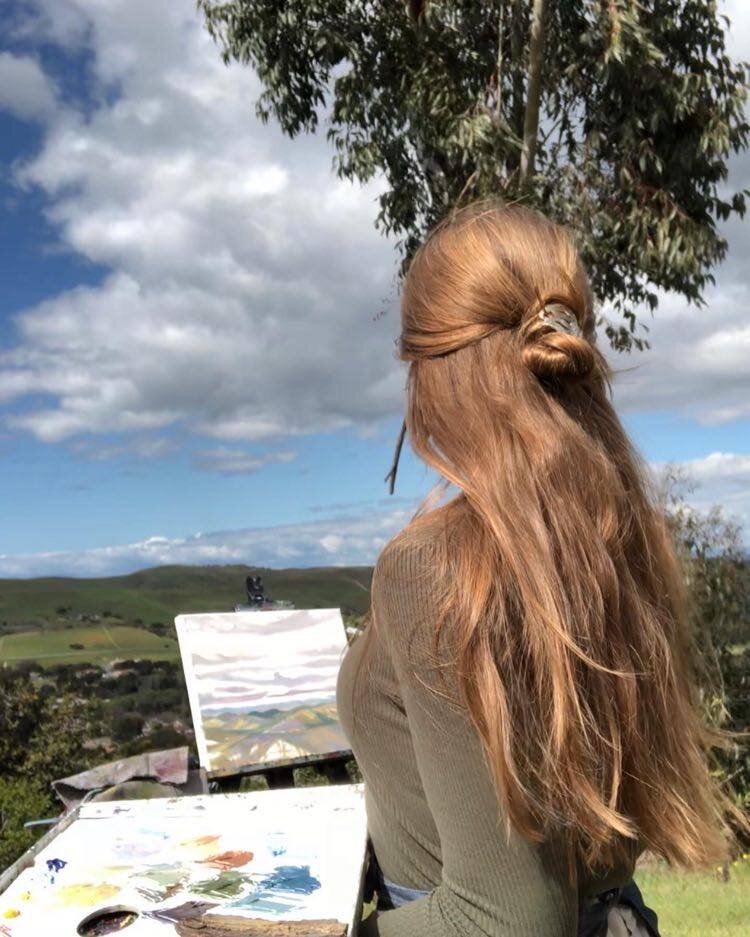


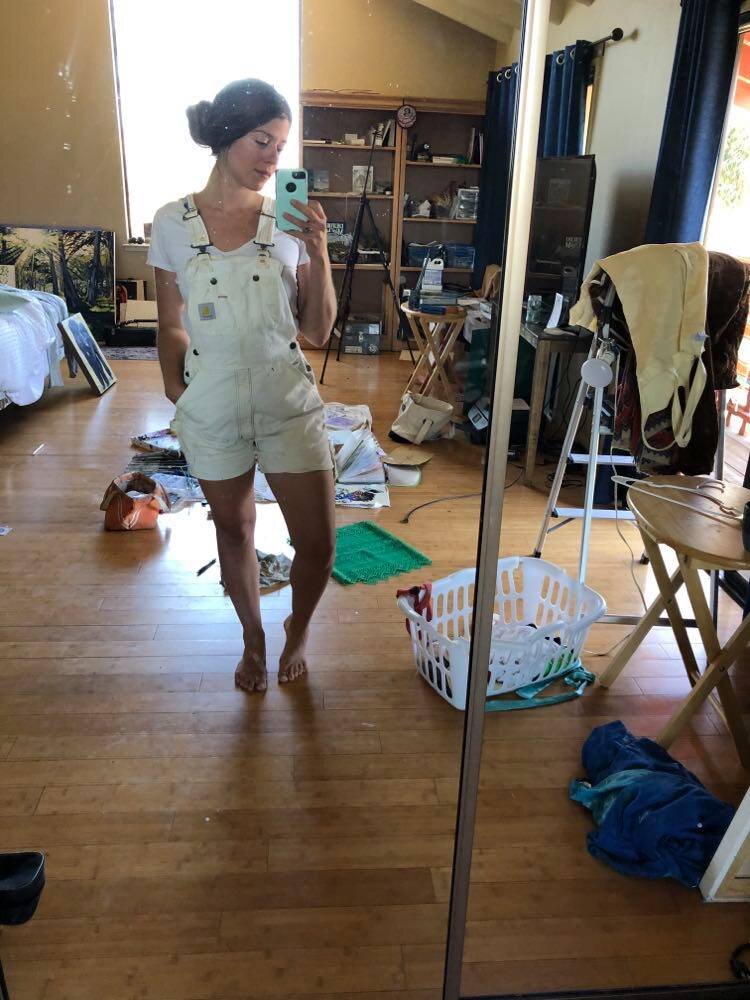
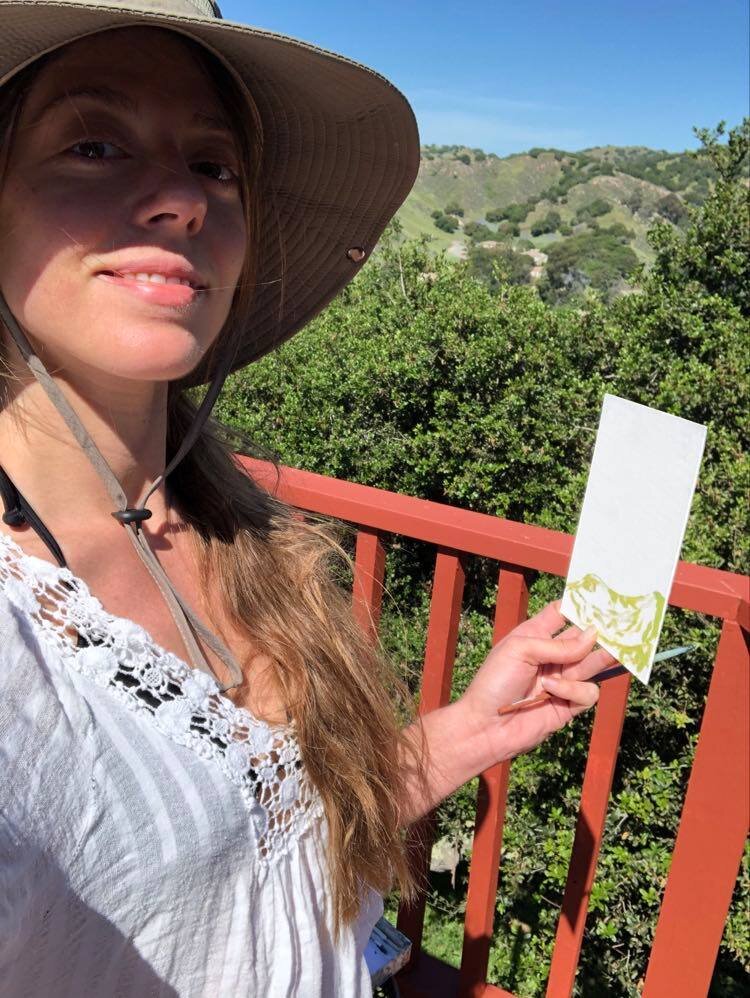
The true gift of this quarantine for me was the opportunity to get to know the Salinas Valley. I read John Steinbeck’s Pastures of Heaven when moving in and was just smitten to be there. Cascading hills, almond and olive trees, a hillside of wild rosemary, sage bushes and lavender, sounds of woodpeckers, owls at night---all of these kept me in a state of wonder and I asked myself how can I honor and give thanks to what Nature and life are giving me? Some days that meant making a small oil painting of the light and sky particular to that day, and some days it was experimenting with natural dyes found around the property. I learned how to harvest and cure olives from trees (thank you internet), made teas and steam treatments to keep my lungs healthy, and took along my sketchbook on every nature walk. I also opened an Etsy shop, Loreandlandscapes, where I sell my prints and selected small paintings, and include a homemade herbal sachet with every order.
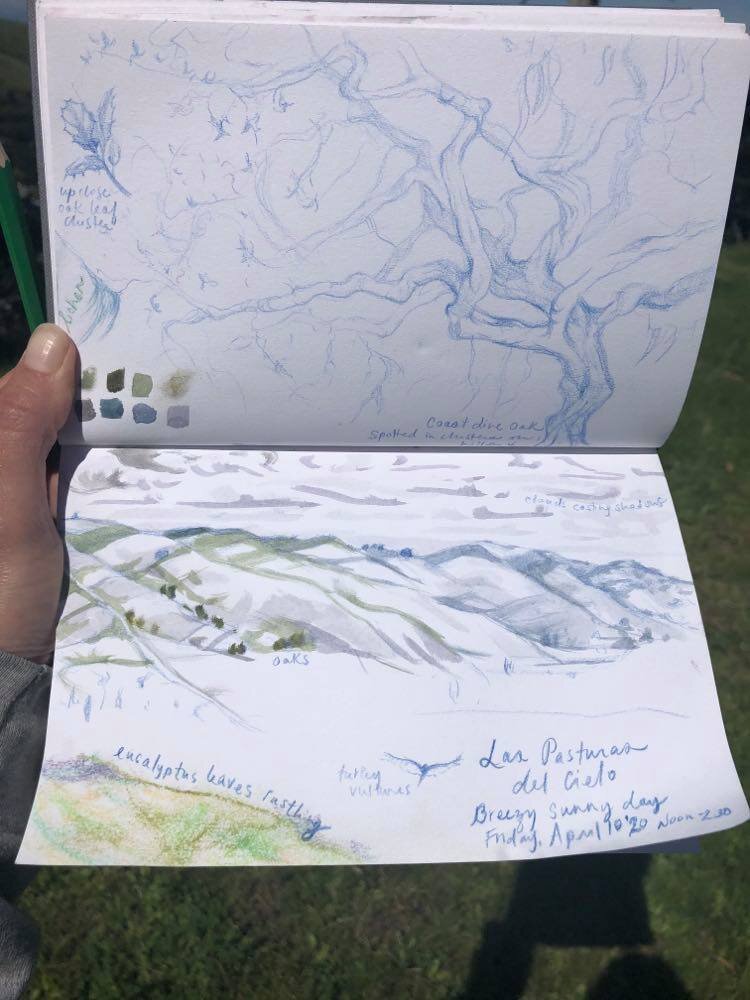
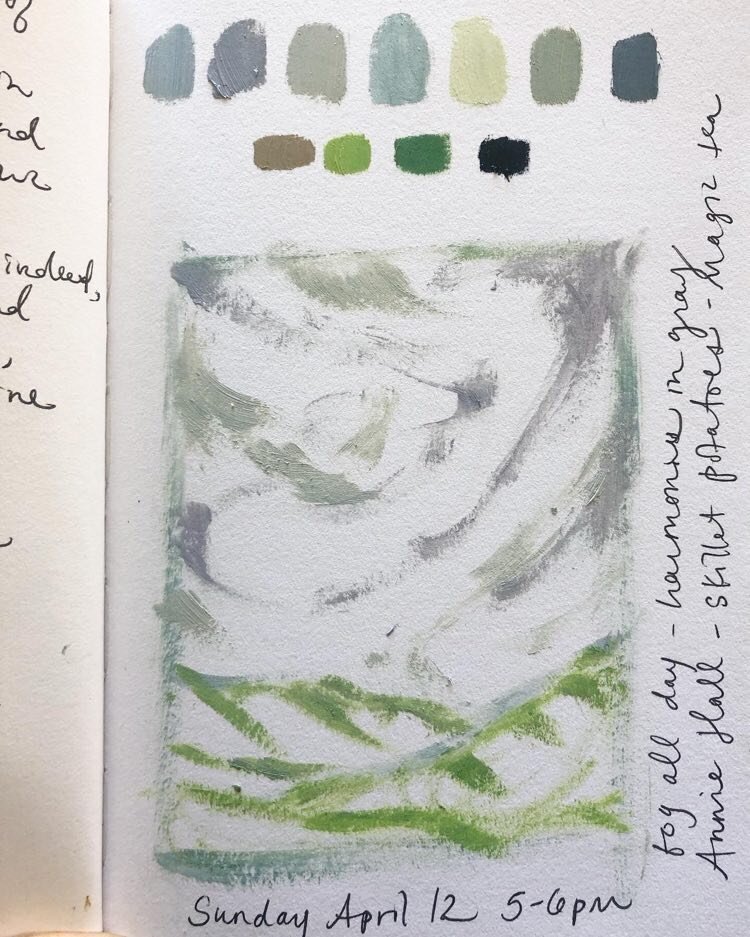
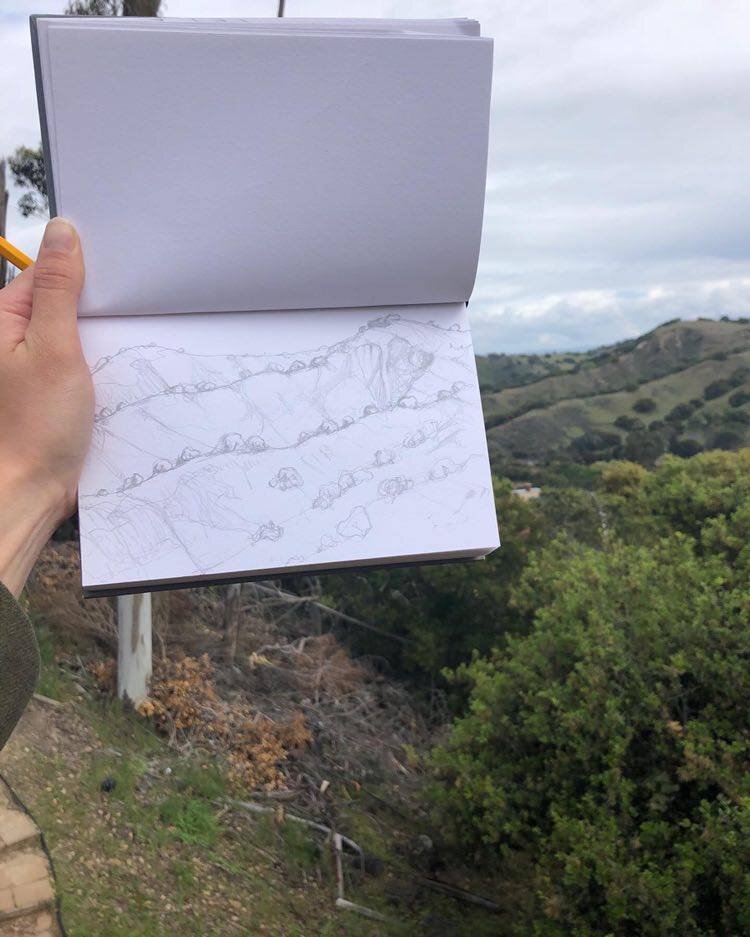
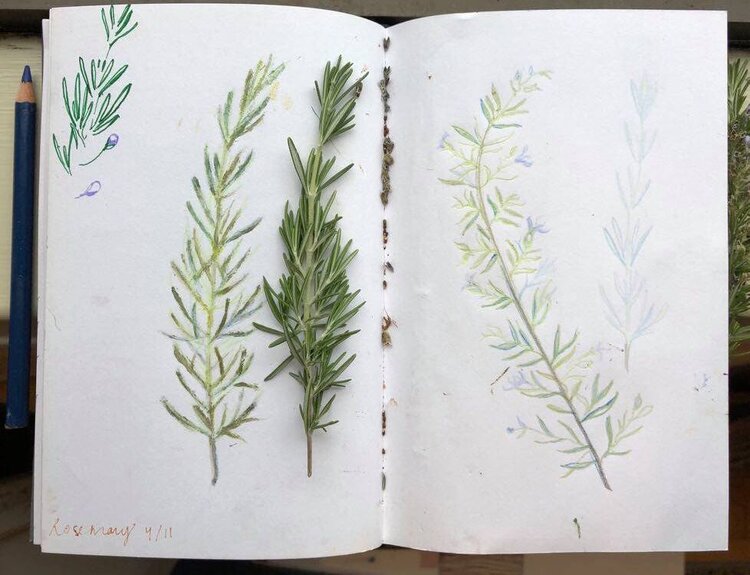
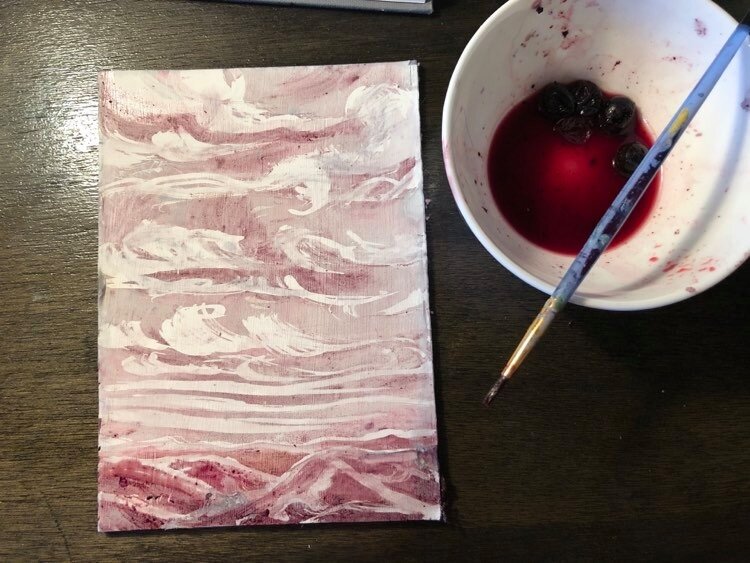
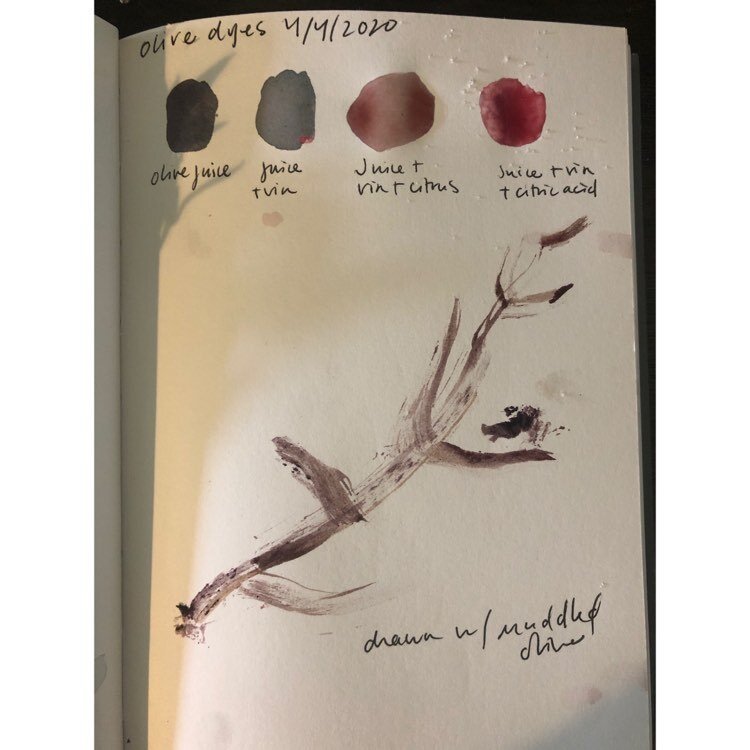
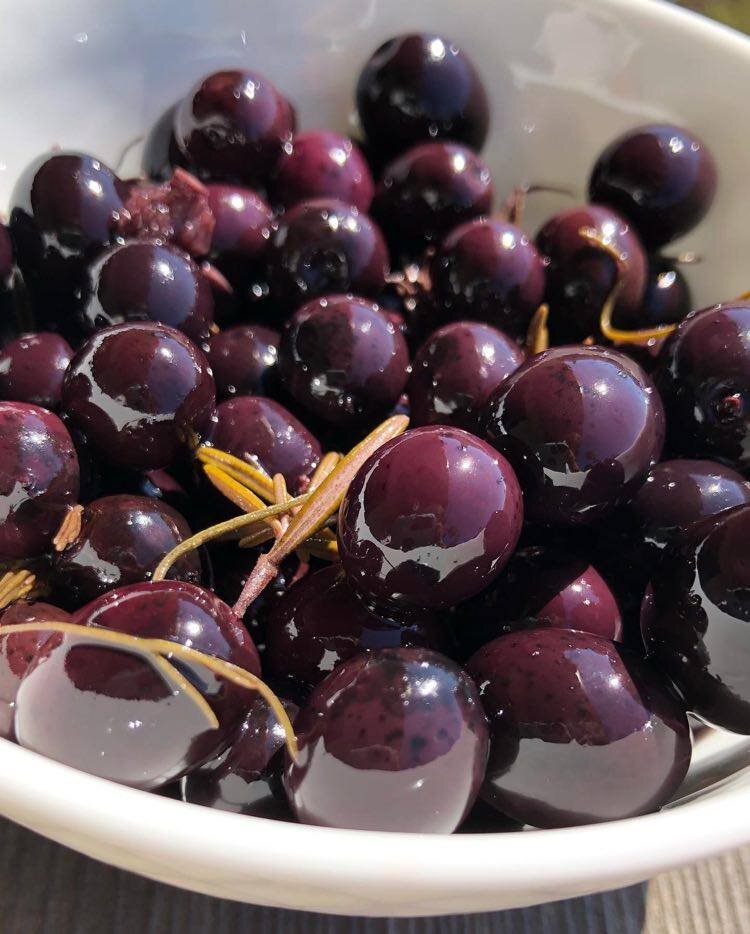

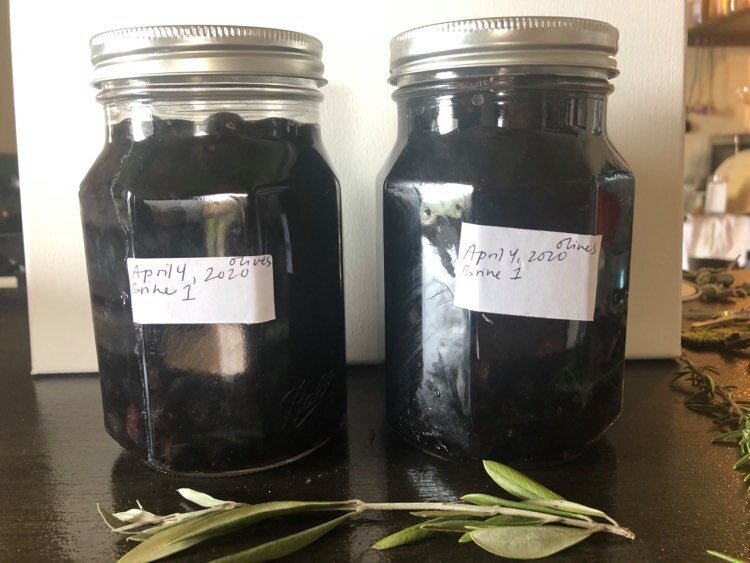

In April, United Way of Monterey County opened the project Notes from Home. This requested locals to create colorful notes with words of encouragement in Spanish and English to be included in care packages for families hit especially hard from the pandemic. I happily hopped onboard, and created my window sky devotions in the form of watercolor cards. I then lined these with encouraging phrases and a passage from the beautiful beloved poem ‘El Cantaro Roto; The Broken Water Jar’ by Octavio Paz. I hope wherever these are, they’re bringing their viewer hope and warmth.
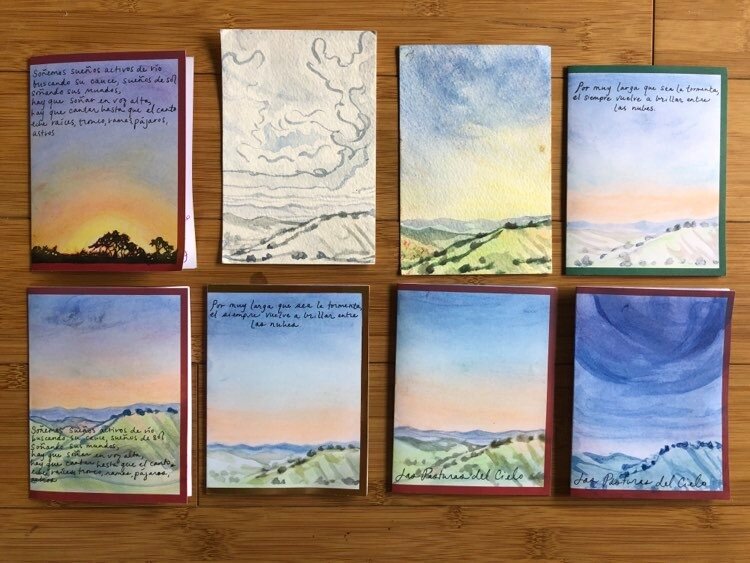
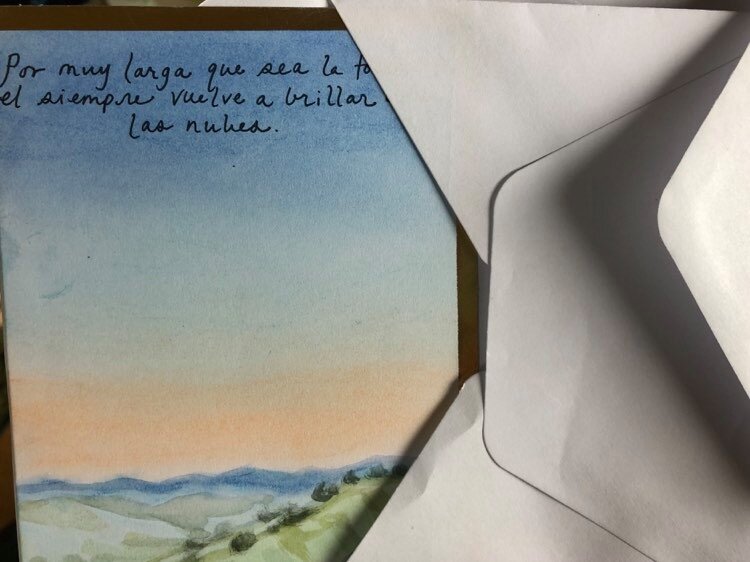
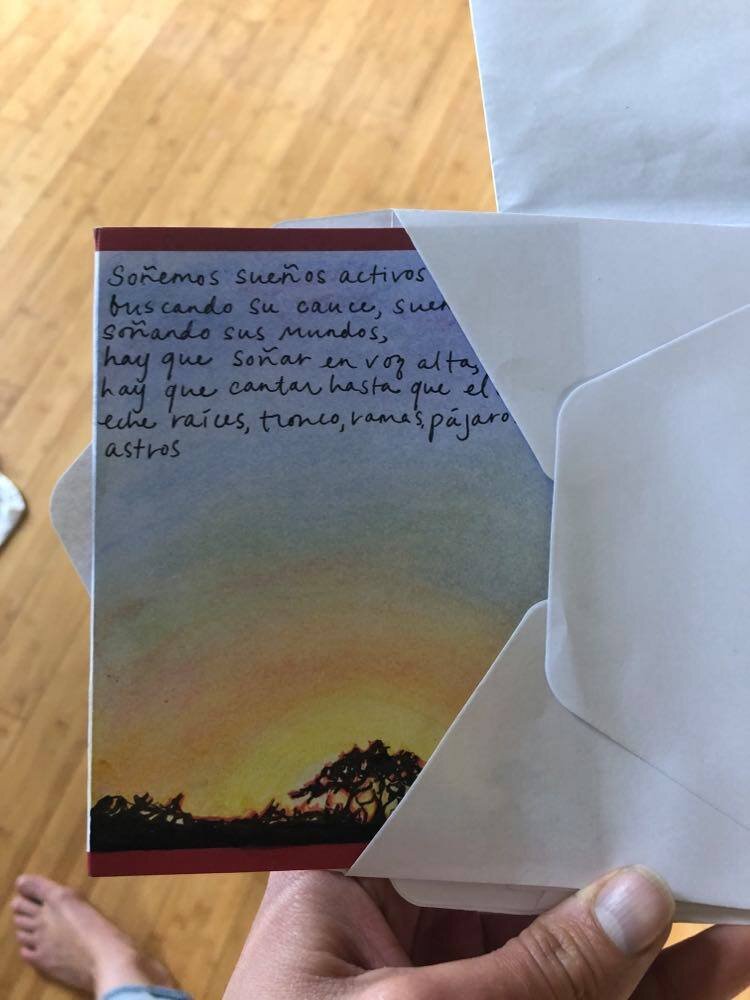


I now find myself in a different place, looking back on these pieces like little windows of memories. When thinking of how to eventually display this series, I knew I wanted to keep them together and present them as a set, but wasn’t sure exactly what that would look like. After playing around with many ideas and rough sketches, this arrangement was created. It honestly took on a life of it’s own and I merely did what I could to help bring it to fruition. It was important to me to keep the display informal and unique, as that is how these paintings were created. It was also important to me that all the framing elements be native to the landscapes depicted. The frame is made of coast redwood pieces, the abalone shell is from a nearby beach. In turn they are a gift back to Nature, mirroring the original intention and inspiration from which making these paintings was conceived. I really enjoyed this process and see this idea as a long river I’ll continue exploring!
These last pictures are a view into the current exhibit Shelter from the Storm at Gualala Arts Center, which I’m honored to be a part of. The gallery is open seven days a week, and one family/group is admitted at a time. On display through February 21.
Thanks for reading, hope you’re well—and if you aren’t, hope you feel better soon!
Take care, happy trails, and always travel in braids.
Love,
Charlotte
Current
On living like I time traveled to the year 1800:
I know that sounds dramatic, but I am sort of living in that way. And with the pandemic still in full swing, why not seek solitude in the forest? So, here I am in Northern California, living with no electricity, no running water, and no WiFi. I have solar and rechargeable lanterns that work very well, and anytime I’m around electricity I plug in anything that needs charging. Which has led me to realize how much we depend on electricity for everything! And how quickly a phone and computer battery dies. I have several three gallon water tanks I refill on a food grade hose hooked up outside, and these usually last me a couple days. Between washing dishes, cooking, boiling water for coffee and tea, and just hydrating, I have become acutely aware of my h2o intake.
My biggest and most unexpected project lately has been to remodel this 1986 camper that I’m staying in. After doing a lot of reading, I consulted with feng shui principles and selected the colors on walls corresponding with the four directions. I painted every surface, including the ceiling, adorned the cabinet trim in herbal illustrations, put down carpet and installed a candelabra over my kitchen table. A friend helped me install a redwood bench and countertops. Sometime along the way I realized my interior decorating aesthetic is influenced by my country grandma’s kitchen. She had a collection of hand-painted fruit and floral porcelain plates artfully hung in the dining room and later her bedroom, and those were on my mind as I painted this herbal trim. The exterior has gypsy wagon vibes, and my hosts call it ‘Charlotte’s Caravan.’ This was fun to paint and made me think of my first giant 4’x6’ painting in college; a circus wagon of my own creation. I clearly have an affinity for colorfully decorated traveling wagons.
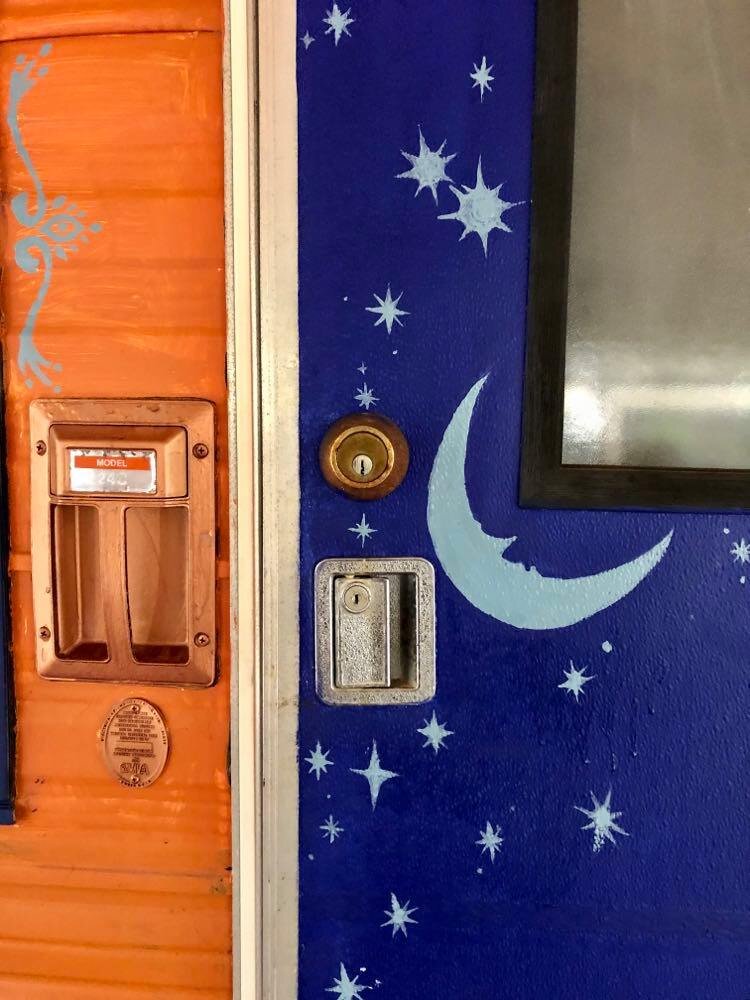


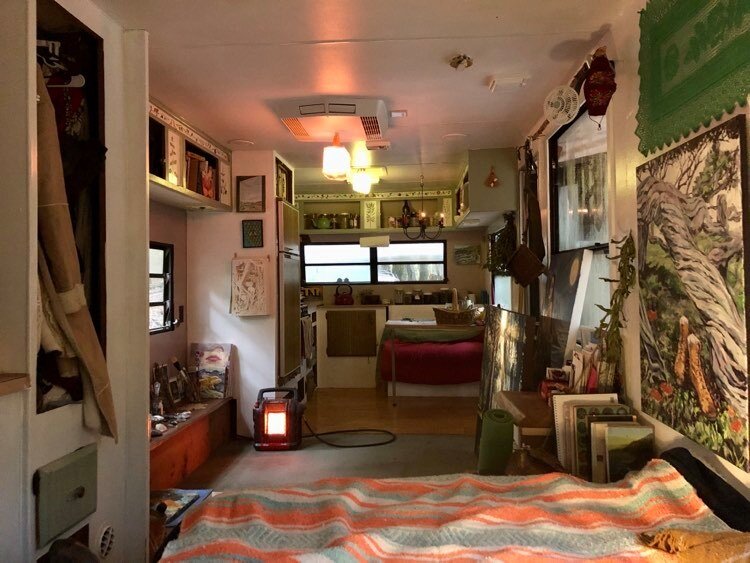
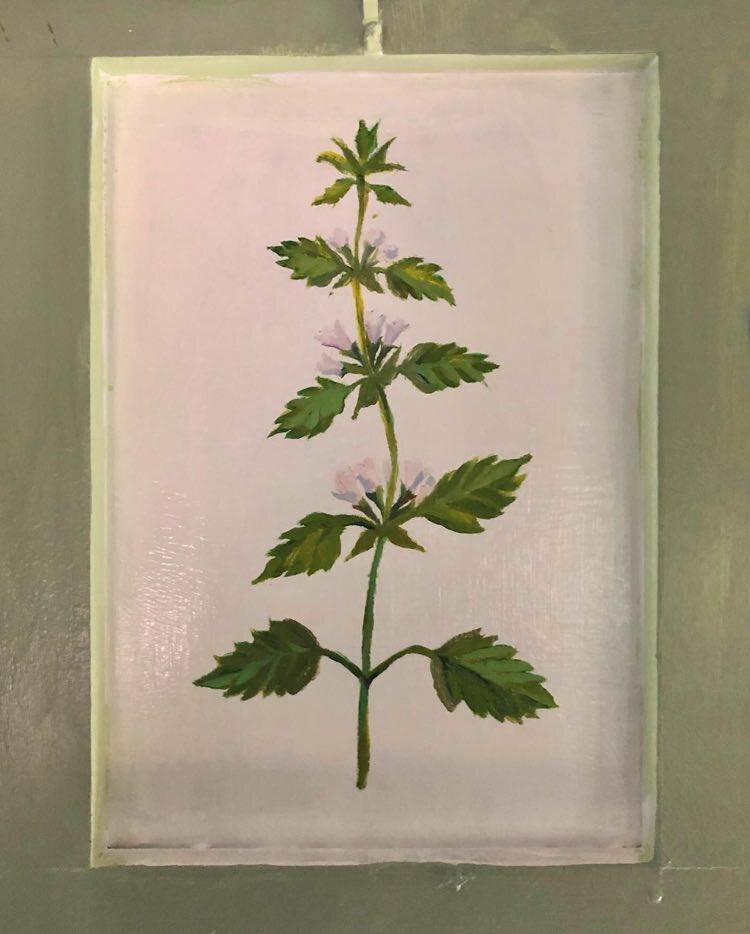

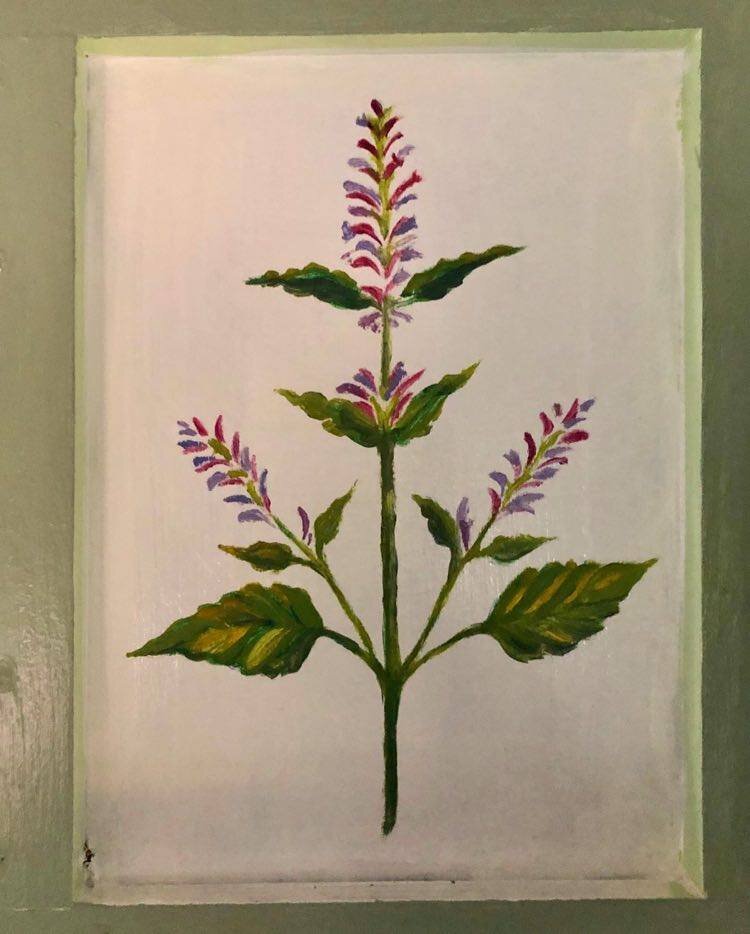
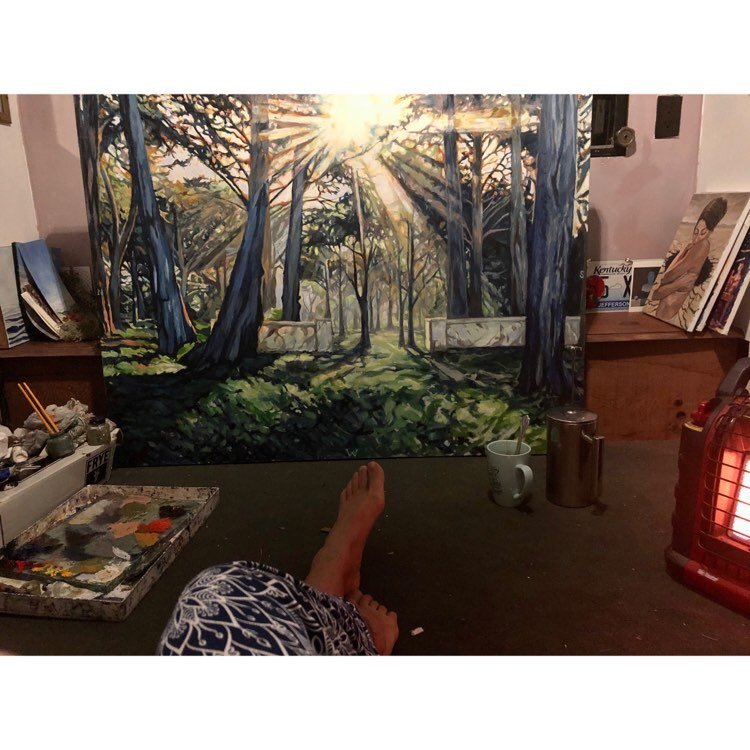
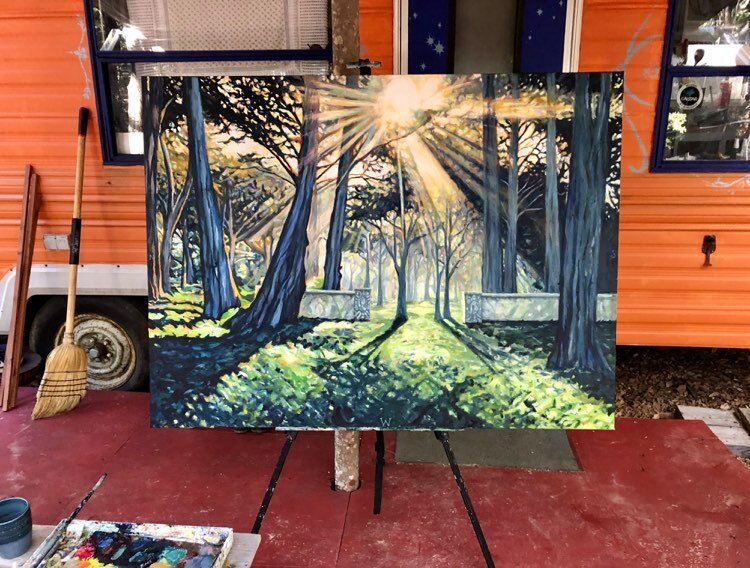
Northern California winter means steady rain, mists and moisture, and being in a forest I feel it seep into my bones. Coupled with writing this amidst a pandemic, any time a scratchy throat comes on or a cough starts, the thoughts can easily drift into a COVID hypochondriac fit. What I’m learning from living here and studying the ways of the indigenous people (this land was originally roamed by the Pomo Indians) is that the forest gives you everything you need to survive it’s winter: one of them being mushrooms! A mega superfood, I’ve been eating a lot of the Oyster variety; in a skillet with butter, oil, in a curry, soup, or in a sauce over noodles. I love painting them and have developed a special relationship with a decaying tree at the bottom of my yard. I go visit it every few days to harvest new fungi growth and to thank it for being so giving and abundant. Douglas fir and redwood needles make a great tea and are high in Vitamin C, and California Bay Leaves are not only good for flavoring a dish, but make a great medicinal tea as well. Not to mention the other herbs growing in the gardens that pop up like weeds.
Through living with an herbalist and helping her in her tea shop, I’m learning more about various native plants and ways of preserving and extracting their medicine. I love making tinctures with the herbs I harvest: sage, fever few, lemon balm, lemon verbena, and thyme are some favorites I’ve been working with. One afternoon in December, on the lowest tide of the winter, we went to the beach to collect Bladderwrack seaweed. Afterwards, I tinctured my harvest, a process I thoroughly enjoy because it fuses homeopathic devotions, biodynamic practices and my former life of bartending. It preserves a place and a moment in time with smell, scent, and healing properties of the plant extracted by alcohol. It’s the most concentrated and convenient way to ingest an herb, and I take comfort in knowing I’ll have my Bladderwrack tincture long after I leave the North Coast, savoring it like a bottle of fine whiskey.




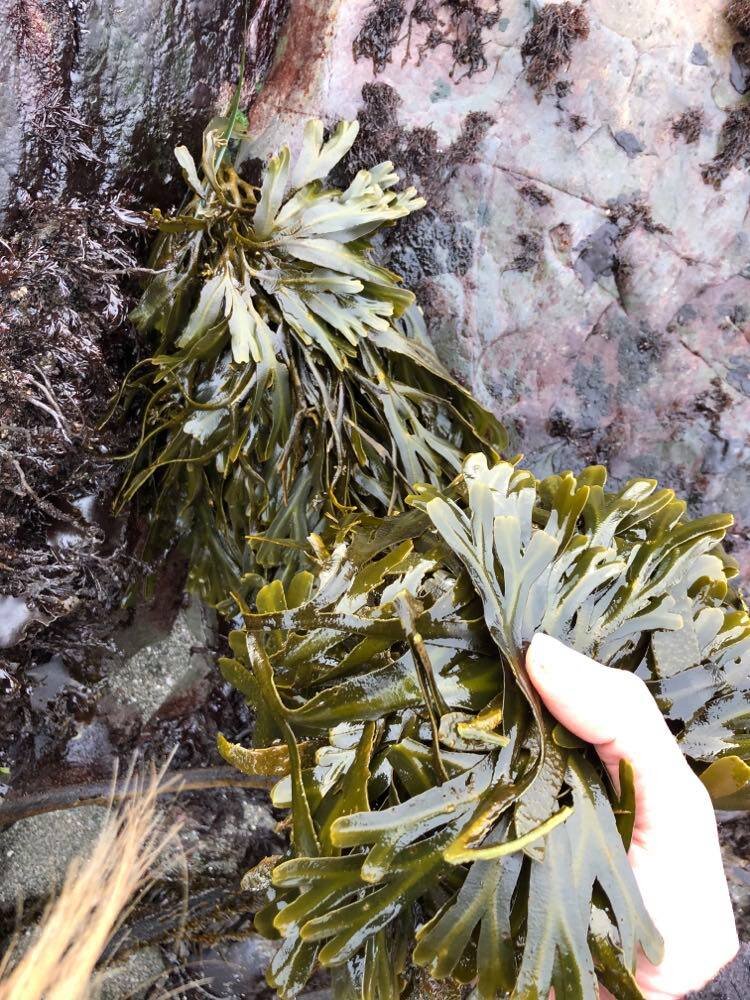
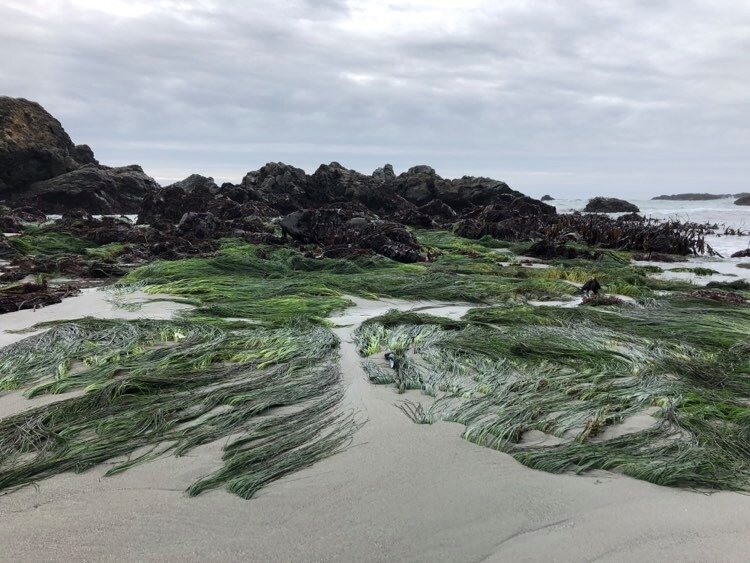
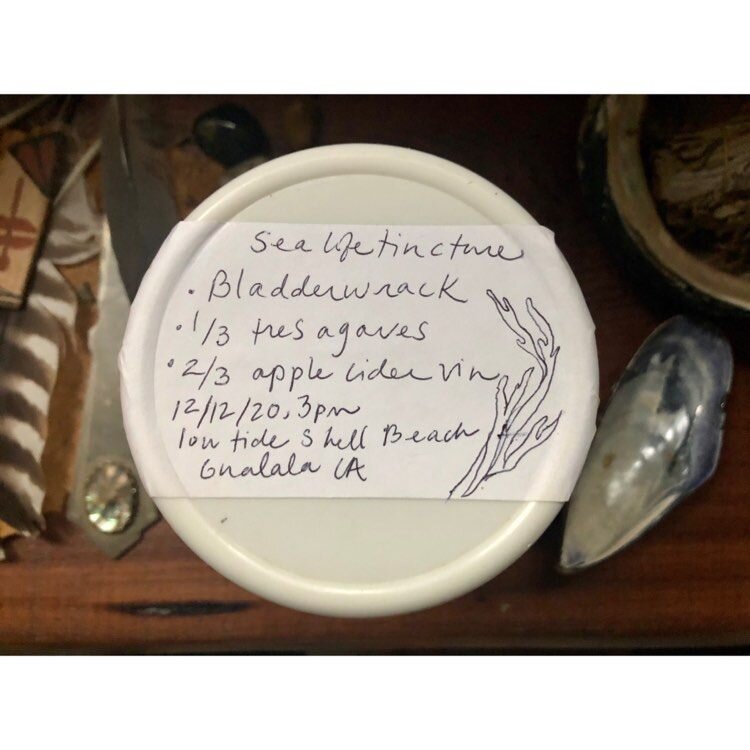
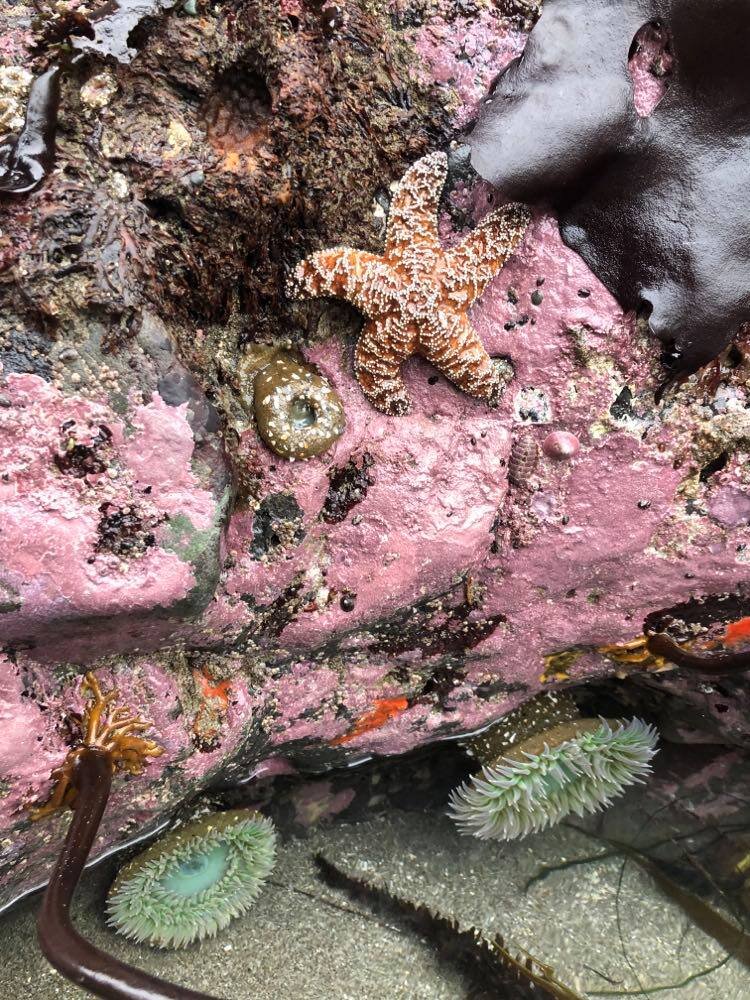

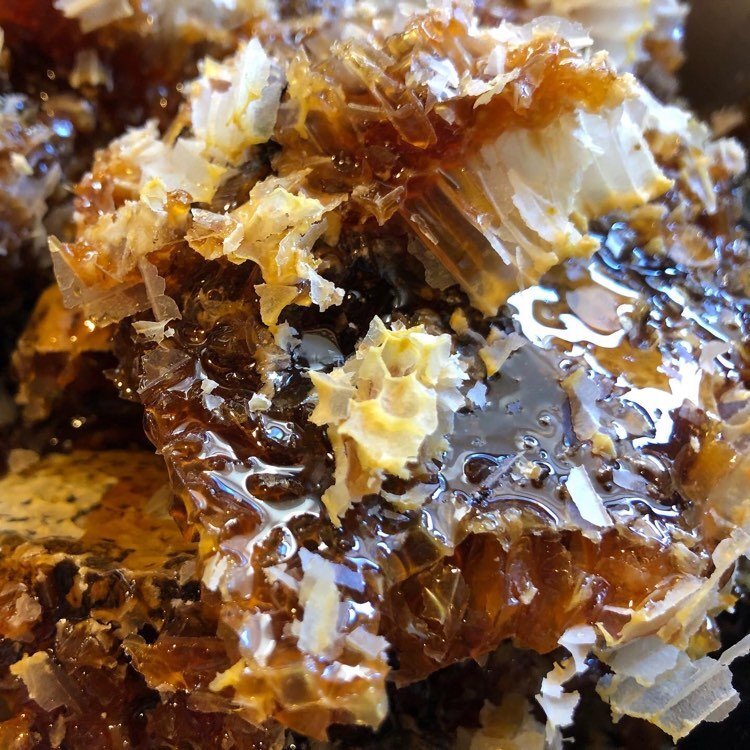
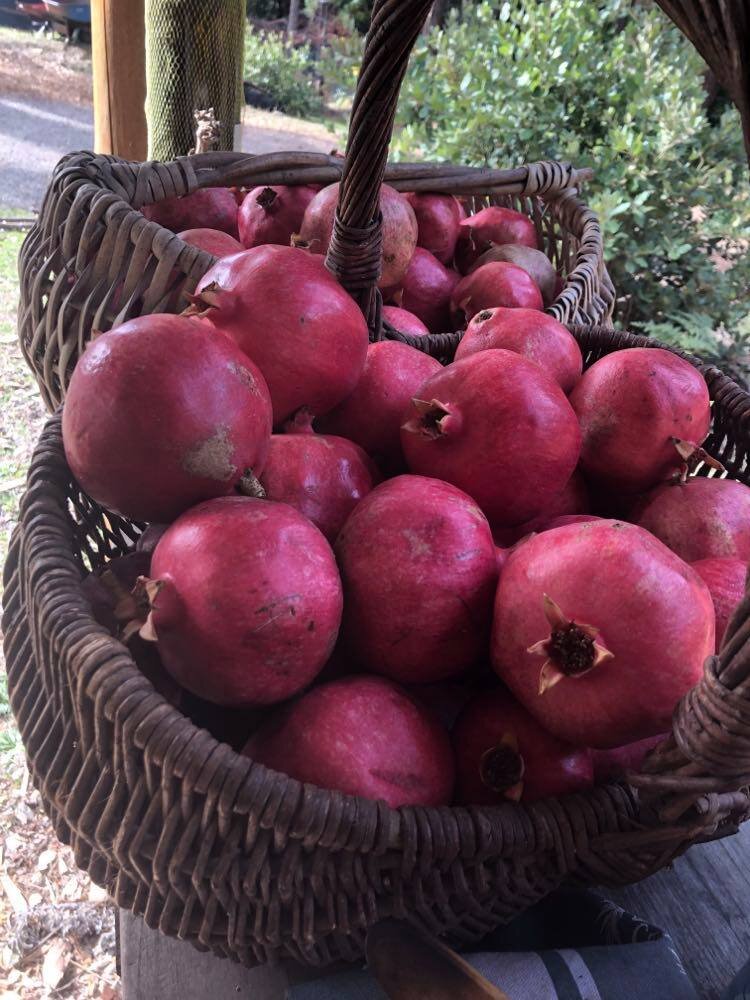
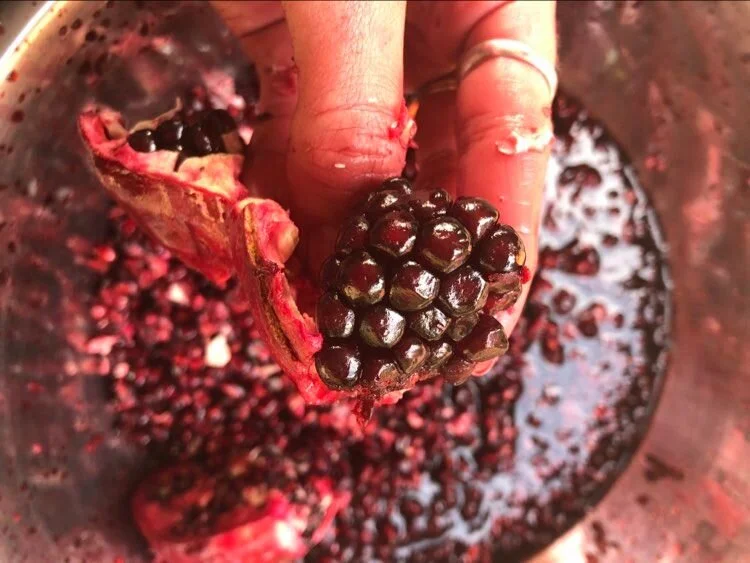
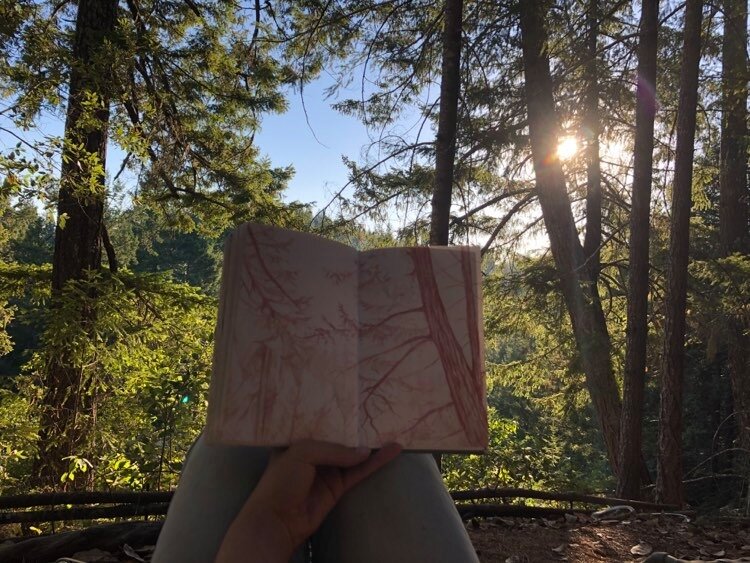
I’m embracing my time in the woods and the inward nature of winter. It’s been three months since I’ve been living off the grid in the forest. My spirit has been stretched in ways I haven't felt before. I’ve had to really lean into my solitude, sit with some of the more tender parts of myself and heal whatever wounds surface. I’ve welcomed the challenges to my ego and material attachments to comfort, and let my intuition take the reigns. I go to bed early and wake up early, working with the light. Alignment with weather and seasons means using those cues to know when to do laundry since clothes dry on a line, when to go foraging and when to harvest and plant. I have a daily morning routine of feeding the ducks and chickens, and I sit and learn from the playful gentleness of the goats. I spent Christmas and New Years going on walks among grandfather trees, reading a book, painting mushrooms and phone chatting with loved ones back home. I am so thankful for the USPS and pen pals.
Finally, I’m excited to announce that I now have three pieces in the group show ‘Shelter from the Storm’ at Gualala Arts Center. It features all paintings completed during COVID2020. One piece is featured in the above photo, the other pieces are ‘Leave Your Breadcrumbs Behind’ and ‘Animacy’, both of which can be found in the California section of my website. I’m happy see my paintings complete their lifecycle by leaving my hands and making it to a gallery wall. The show opens January 15 and will be up for the next six weeks. All work is for sale. To see the exhibit, contact me or the arts center to book a viewing appointment.
Hope you’ve had a blessed New Year. Congratulations on making it through 2020. May we all be a little wiser in 2021.
Thanks for reading, take care, and always travel in braids.
Love,
Charlotte
etymology
‘Always travel in braids’ is a little diddy born out of living room laughter with my friends Claire, Livie and Melissa in our early twenties. Knowing how to French braid, I was always the hair braider. Braids were most often requested before nice occasions, before going out on the town, hot dates, or parting ways for a trip. Whatever it was, braids always served as a ritual to prepare oneself. One afternoon before we said our goodbyes and as I finished fastening the last hair tie, someone said ‘always travel in braids’ and our mantra was created.
It’s always stuck with me, especially after moving across the country alone. I’m often missing my friends and the act of braiding their hair. ‘Braiding Sweetgrass, Indigenous Wisdom, Scientific Knowledge and the Teachings of Plants’ by Robin Wall Kimmerer has been a well traversed book for me this year, and early on is the passage “There is such tenderness in braiding the hair of someone you love.” I think about my Mom braiding my hair, teaching me how to French braid by watching her weave my sisters and cousin’s hair, and my older sisters playing with my hair. And I think about how I braided my friends’ hair so often before we’d go out, and in my more impatient days wondering why they wouldn't just learn how to do it themselves, but realizing the request was really about the comforting and sacred experience that is shared between the braider and the braided; the sisterly act of imparting one’s feminine strength to another. I think about practicing braids on my hair, and figuring out that I made the best braids often when I wasn’t looking with my eyes but seeing with my fingers. Braiding is a rhythm, and the best ones are produced in a good flow state. The ones with the most kinks are reflective of a struggling process where you’re holding too tight or trying too hard. When this happens, the best thing is to find your breath and start over again.
Traveling in braids isn’t just for us long-haired folks. One can ‘travel in braids’ by enacting any sort of intentional grounding ritual before they go. Maybe it’s wearing a certain ring or pair of earrings, a scent, saying an affirmation or singing a song you love with friends. You know what makes you feel your sunshiney best! But if you do have long hair, try it. Be present in your intentions with each weave, and see how ya feel.
































